Best instant cameras in 2025
Here are the best instant cameras based on our testing

While the best instant cameras won't shoot images to rival the best cameras, they can nevertheless take a great photo, and offer a tactile satisfaction and instant gratification that most 'proper' cameras don't. There's just a feeling to them that can't be replicated by the reams of technology in today's top end digital cams.
There’s a simplicity to instant camera photography that many people enjoy. It’s often nicer to shoot, print and make a memory instantly than it is to sweat over photographic perfection and spend hours in the editing suite. There’s also obviously the instant gratification and pleasing retro feeling of holding a printed photo in the hand — something that by default we aren’t used to in today’s smartphone age.
Thanks to these reasons, and their cheapness and simplicity, instant cameras are often the go-to choice for parties and weddings, and also for giving images as heartfelt gifts.
Unlike the analogue instant cameras of old, today’s instants have a range of features to help them blend seamlessly into digital society. These range from the ability to add filters, through to smartphone connectivity, allowing users to print pictures from their phone’s camera roll.
Many of the best instant cameras cost under $150, while some cost less than $100, making them great guilt-free purchases for special occasions. We’ve rounded up our favorites that you can buy right now, to help you make the right choice. Read on for our pick of the best instant cameras.
The quick list
If you're after an instant camera, chances are you're a busy type! Here's a super quick snapshot of the best instant cameras. Keep reading for the full lowdown.
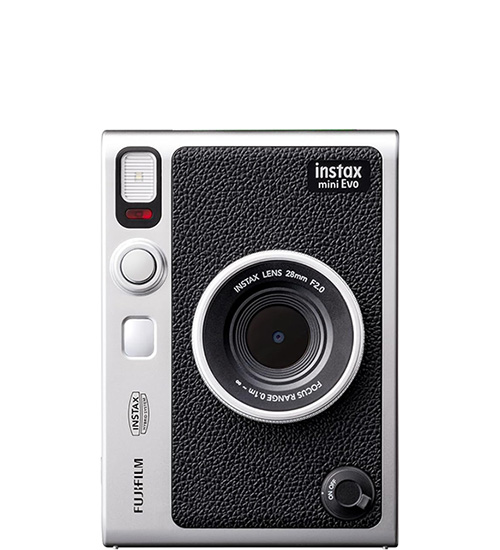
Fujifilm Instax mini Evo
The perfect blend of creative control, image quality, handling and gorgeous styling.

Best budget
While it ain't perfect, the Polaroid Go Gen 2 is the best camera you can buy on a budget, with great handling and image quality.
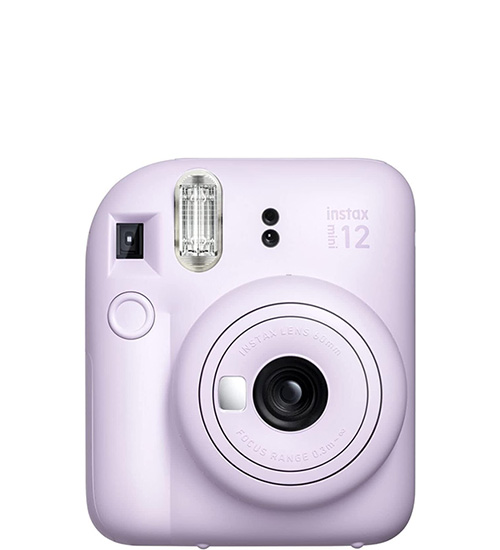
Best for beginners
With its simple user interface but lovely image quality and fun, bubbly looks, the Instax mini 12 is ideal for newbies.
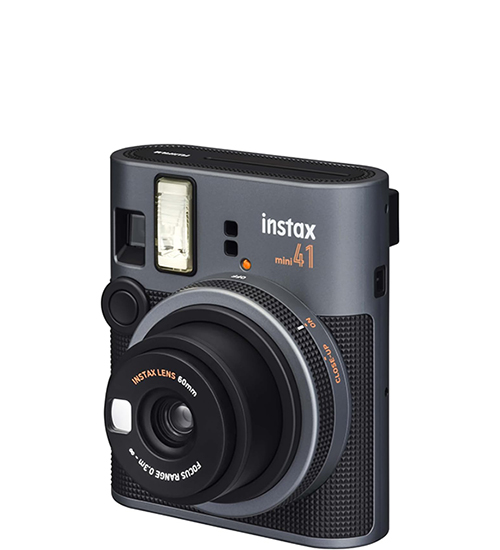
Best for weddings
Easy to use, with great battery life and lovely images (even in low light), the Instax mini 41 is ideal for documenting weddings.

Best for travel
Thanks to its compact design, variety of lens attachments plus its great images, this camera is ideal for travellers.
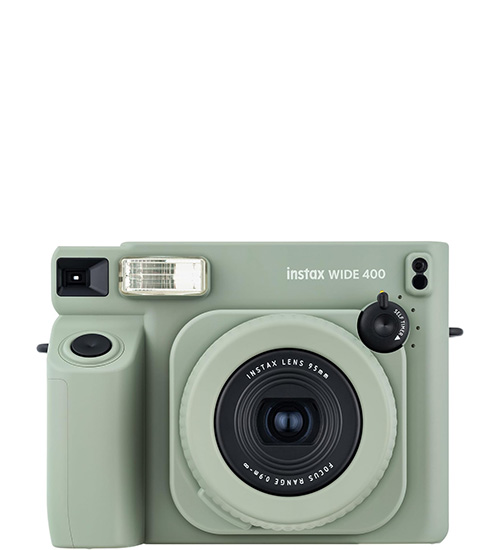
Best wide format
The Instax Wide 400 uses larger format print paper, making it great for group shots, landscape, or any other wide photos.
The best instant cameras you can buy today

Specifications
Reasons to buy
Reasons to avoid
The Fujifilm Instax mini Evo is the best instant camera overall, merging the experience of a dedicated digital camera of the 2000s, the fun of 70s and 80s instamatics, and the design aesthetics of 50s and 60s SLRs.
The Instax mini Evo offers extensive creative control. It has a dedicated dial to choose from 10 filters and a lens dial to choose from 10 lens effects, such as fisheye, double exposure and color shift. Combined, you get 100 combinations at your fingertips for any situation and photography style. The photos this camera produces are lovely. In our testing, the camera performed exceptionally well in both bright and low-light conditions. We also enjoyed the ease of use and portability. The camera weighs just over 10 ounces so it’s comfortable to carry it around your neck.
Compared to similarly priced cameras, such as the Kodak Mini Shot 2 Retro, the Instax mini Evo provides way more creative control. The print quality is also a lot better. Additionally, the camera stores 45 photos so you can go back and print the ones you like. It also comes with a microSD card slot for more storage. You can also transfer images from the camera to your smartphone, but this applies only to the ones that have been printed.
If you're on a budget, this isn't going to be the right camera for you, and we'd recommend the Polaroid Go Gen 2, which you can read about just below. If you can stretch your budget though, the mini Evo offers way more than the Polaroid, thanks to its huge array of creative controls and excellent low light performance.
Overall, the Instax mini Evo is a stellar camera and while it will set you back $199, we feel like it’s well worth the money.
Read our full Fujifilm Instax mini Evo review.
See sample images
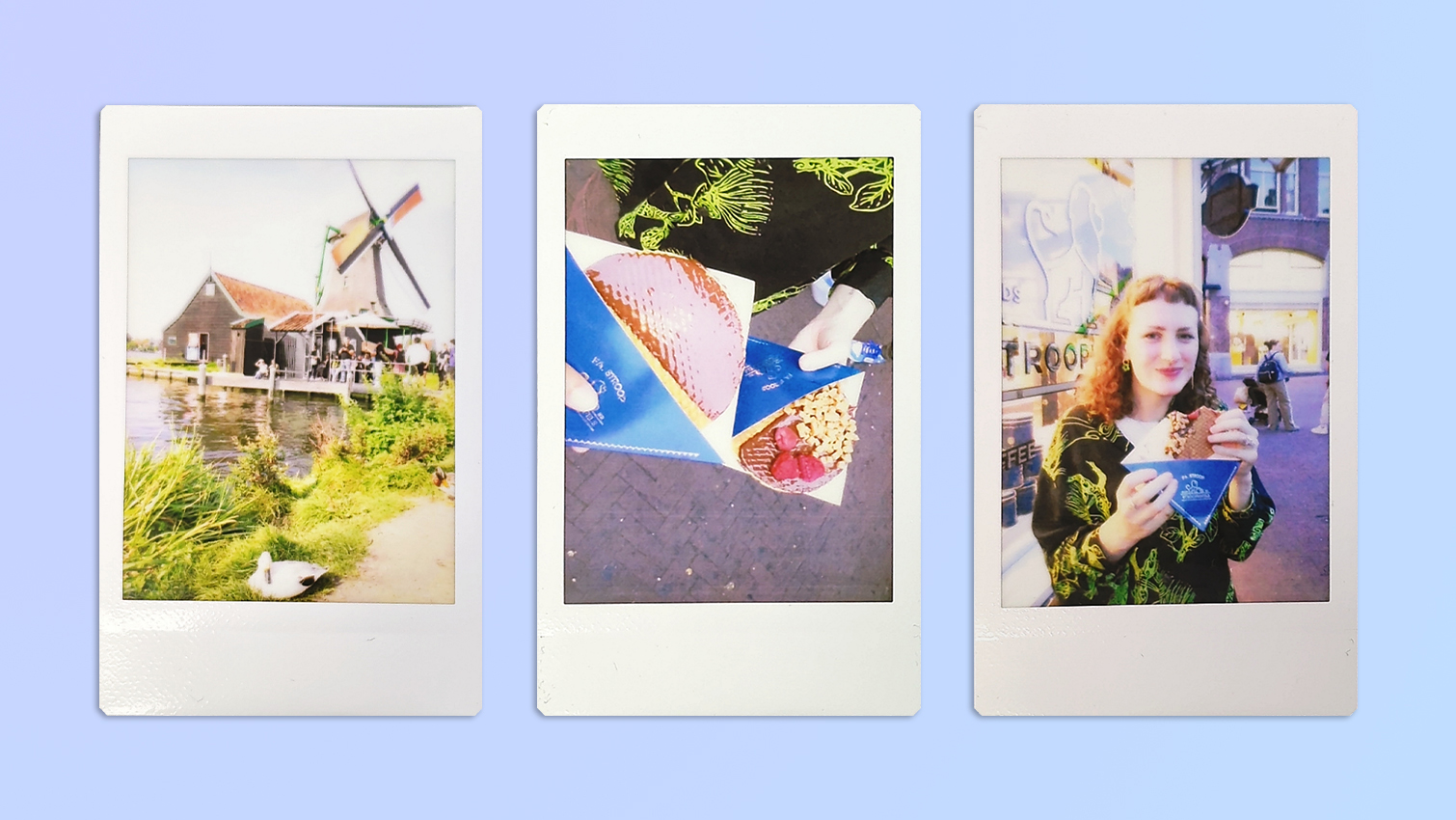


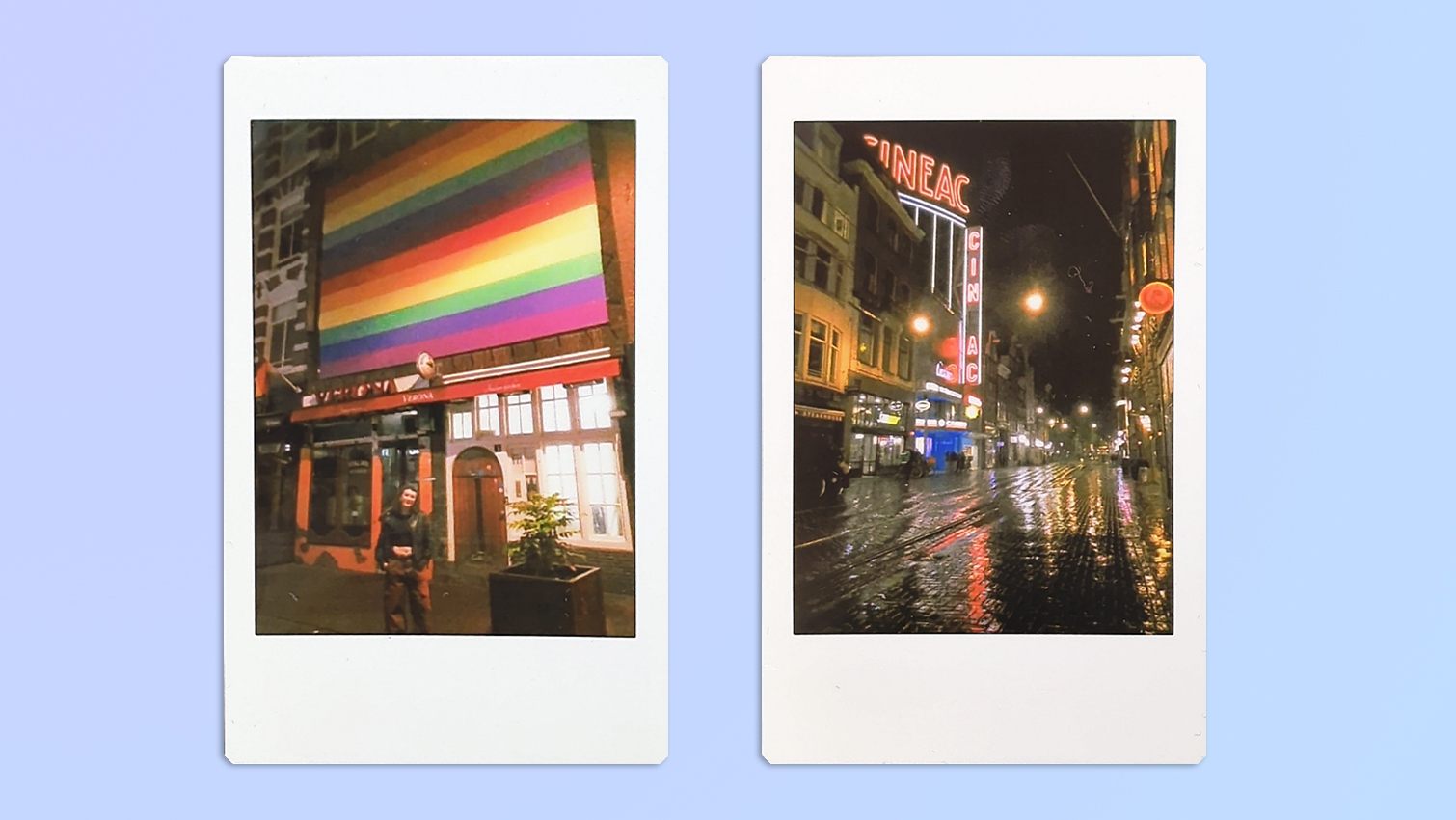
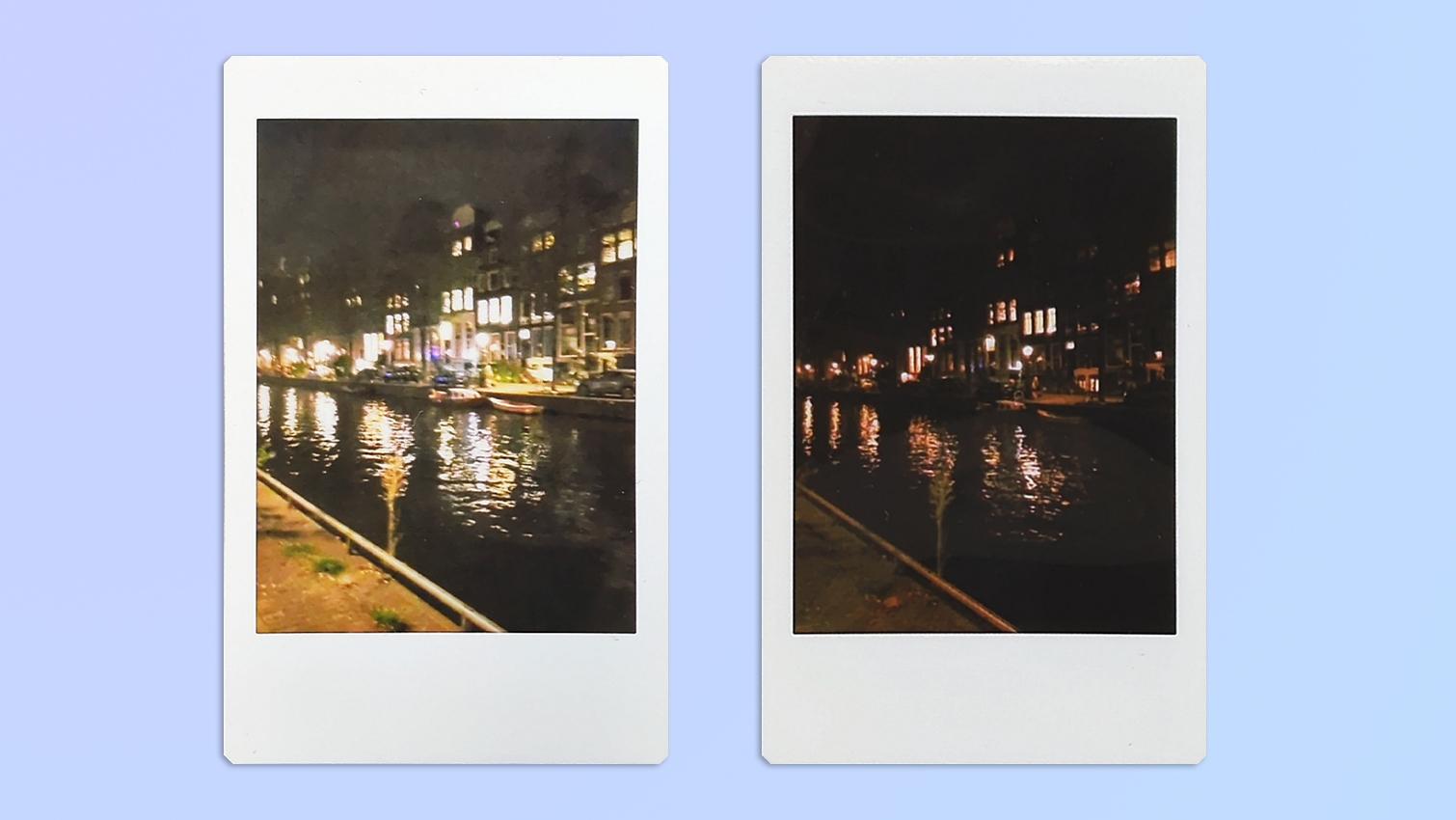
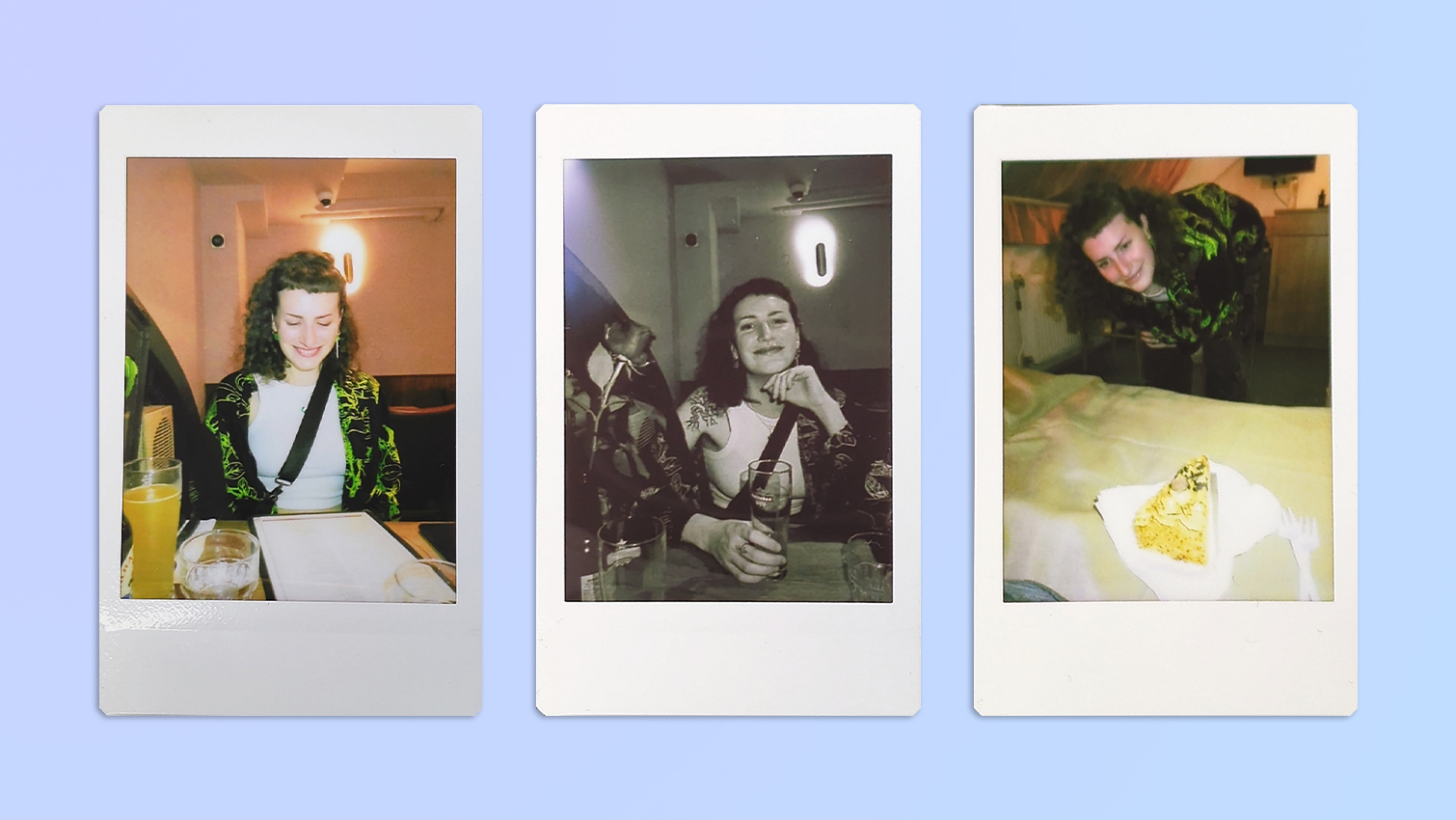
The best budget instant camera

Specifications
Reasons to buy
Reasons to avoid
If you're on a budget, there are plenty of options for you, but the Polaroid Go Gen 2 is the best of the bunch. As Polaroid claims, this is the world’s smallest instant camera, and it really is “take anywhere-able” as you can slip it into your pocket and go about your day. With a maximum aperture of f/9, a top shutter speed of 1/300 second and a built-in flash, it delivers superb and detailed retro prints, especially in bright conditions. With the addition of a double exposure mode which was missing from the original Go, you can get really creative with your shots. There’s also a selfie mirror and self-timer, and both are fun to use. User-friendly with only 3 buttons, this little beauty can be used by anyone, even someone who isn’t well-versed with the semantics of photography. The Go Gen 2 also boasts great battery life as a single charge will last you between 15 and 18 shots.
The camera, however, doesn’t perform as well in low-light conditions and might have you considering other options like the Instax mini Evo above, if that’s a dealbreaker. Similarly, there is no dedicated macro mode so shooting a flower, for example, up close takes a bit of trial and error. Film is also relatively expensive — a single print will cost you approximately $1.12.
That being said, the Go Gen 2 is the cutest camera I’ve shot with and is super user friendly (although not quite as user-friendly as the Instax mini 12, our top pick for beginners). It looks and feels premium, and it’s easy to carry, making it the ideal travel companion.
Read our full Polaroid Go Gen 2 review.
See sample images

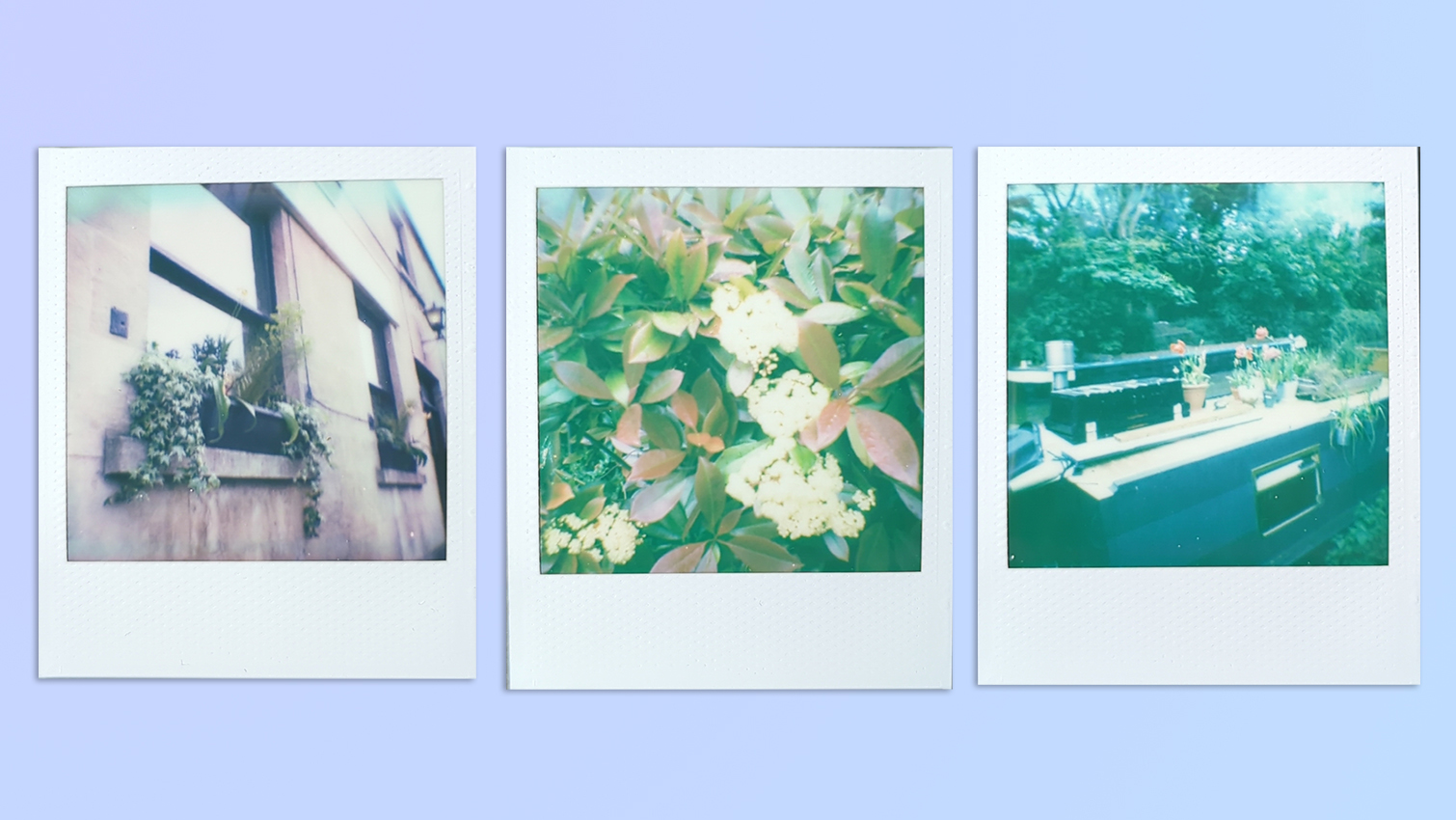

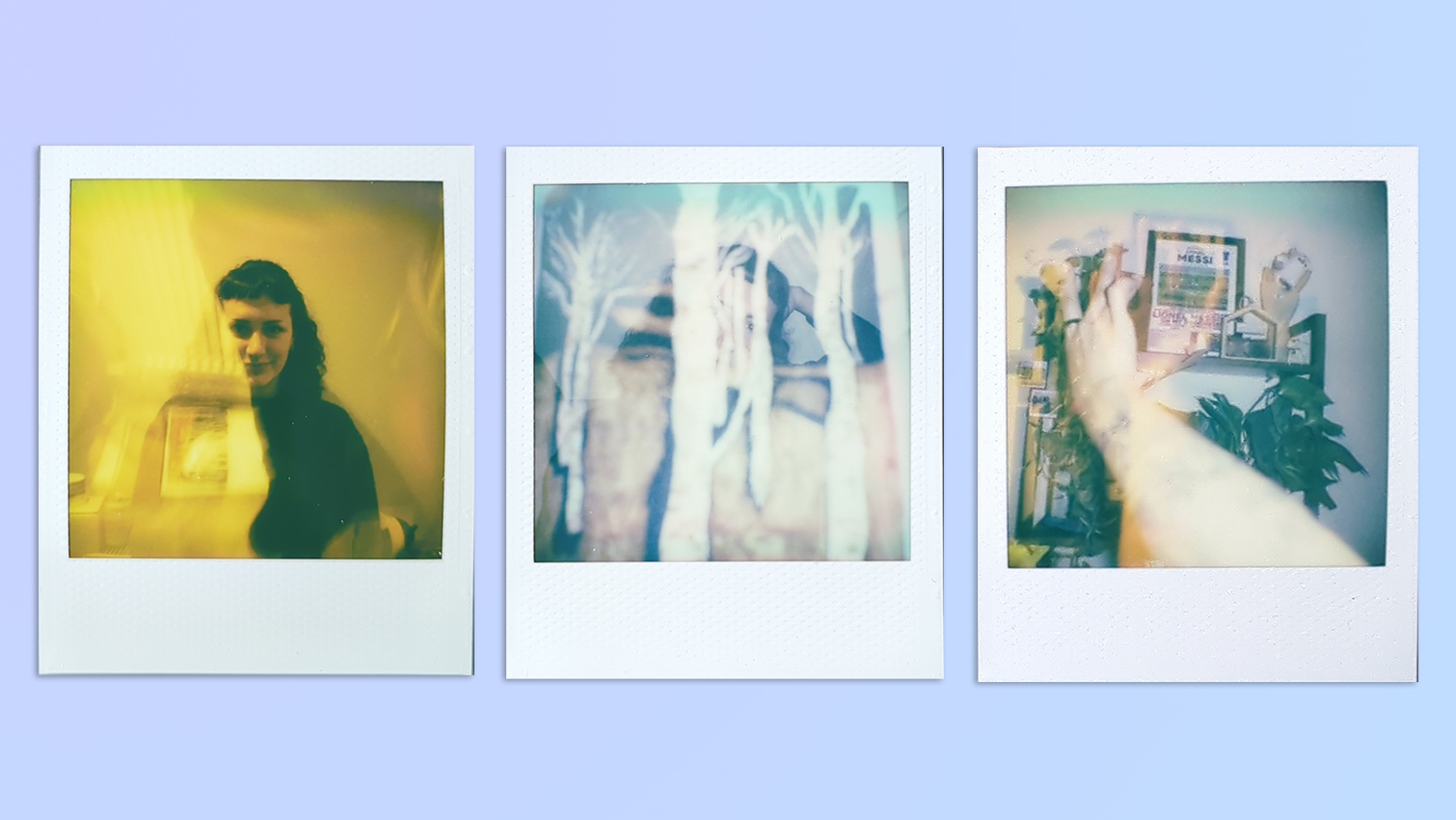


The best instant camera for beginners

Fujifilm Instax Mini 12
Our expert review:
Specifications
Reasons to buy
Reasons to avoid
Looking for one of the best instant cameras but don’t want to get bogged down with the technical side of photography? The Fujifilm Instax mini 12 might be the one for you. It’s for beginners venturing into the world of instant photography for the first time, thanks to the ease of use.
The camera furnishes just a single adjustment: turning the lens barrel one click sets it to shoot at a normal distance, and turning another click sets it for close-ups and selfies. And the resulting images are bright, detailed, and the colors are faithfully reproduced. Photos develop in just under 90 seconds, and cost 75 cents apiece. The compact and lightweight body also make it very easy to travel with the Instax mini 12. A dedicated smartphone app allows you to quickly scan and share your prints on social media too.
In our testing, most shots turned out the way we envisioned, and we loved how easy it was to use the camera, as there’s only the shutter button you need to familiarize yourself with.
However, the Instax mini 12 doesn’t feature a self-timer or double exposures — features present in the similarly priced Polaroid Go Gen 2. Also, photos taken in very bright light may be over exposed. The Kodak Mini Shot 2 Retro doesn’t have this issue, so if you value correct exposures over anything, consider other options than the Instax mini 12.
Overall, the Instax mini 12 is excellent for beginners and travelers who want to capture memories in mini prints.
Read our full Fujifilm Instax mini 12 review.
See sample images
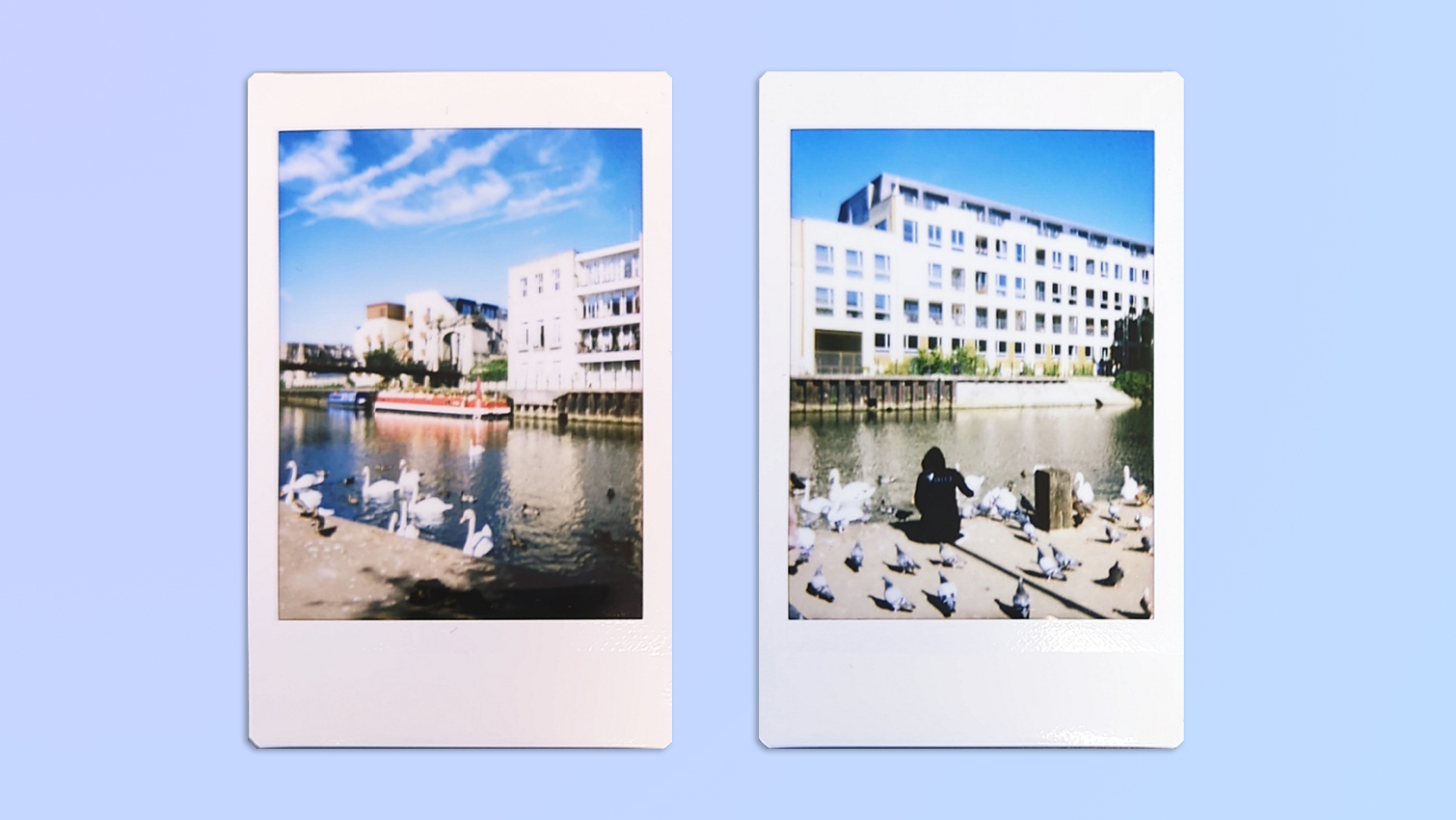

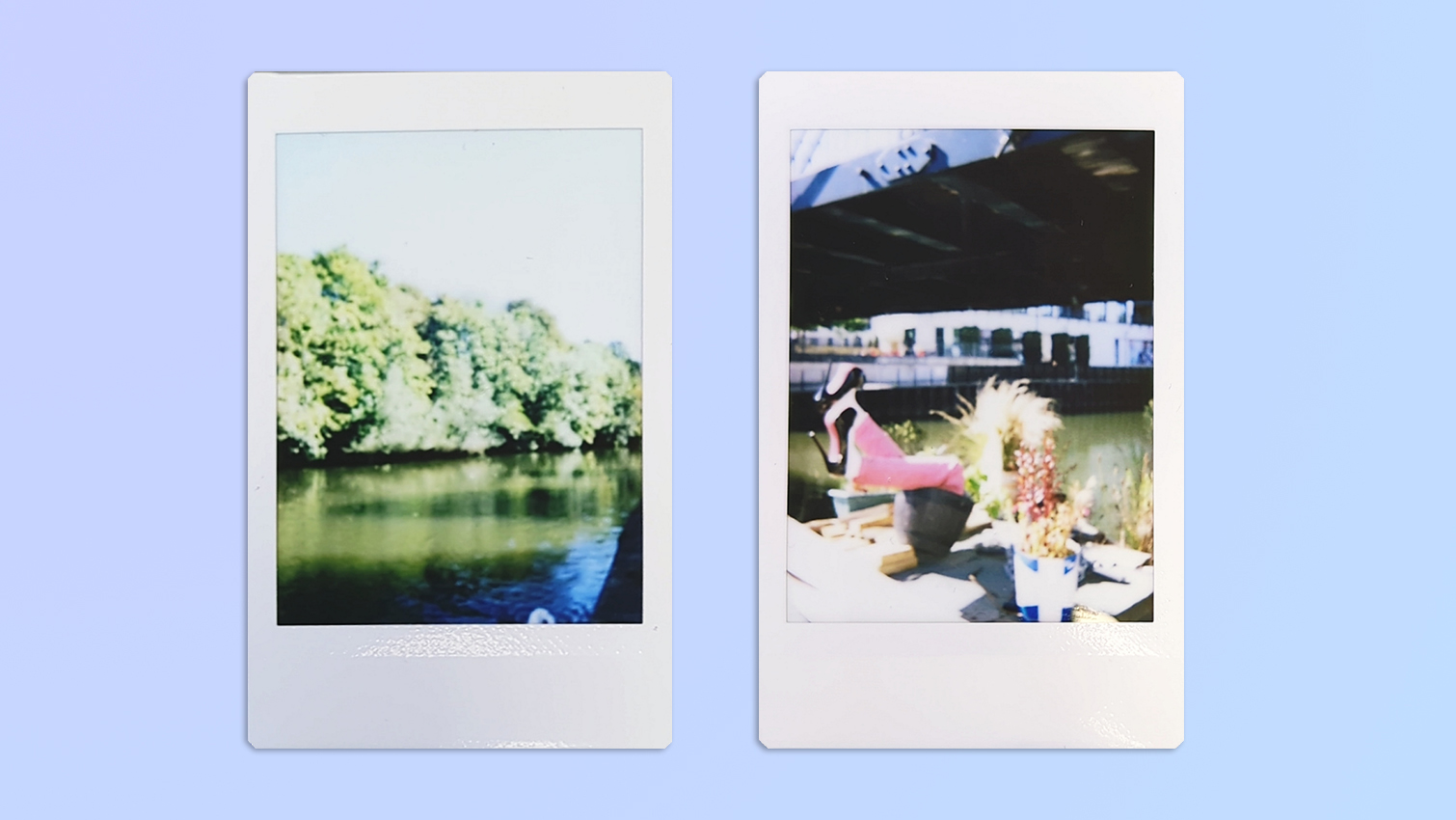
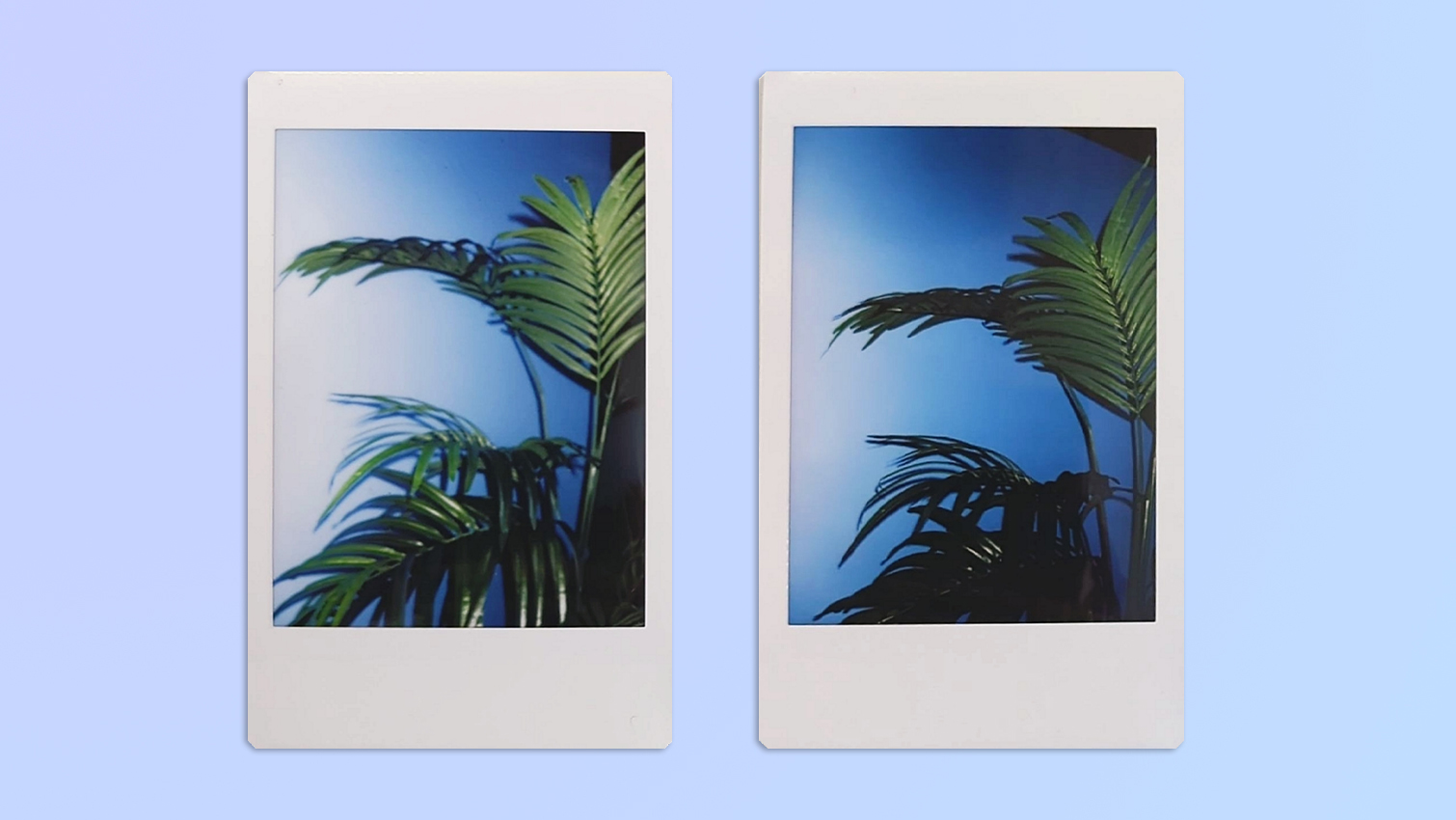
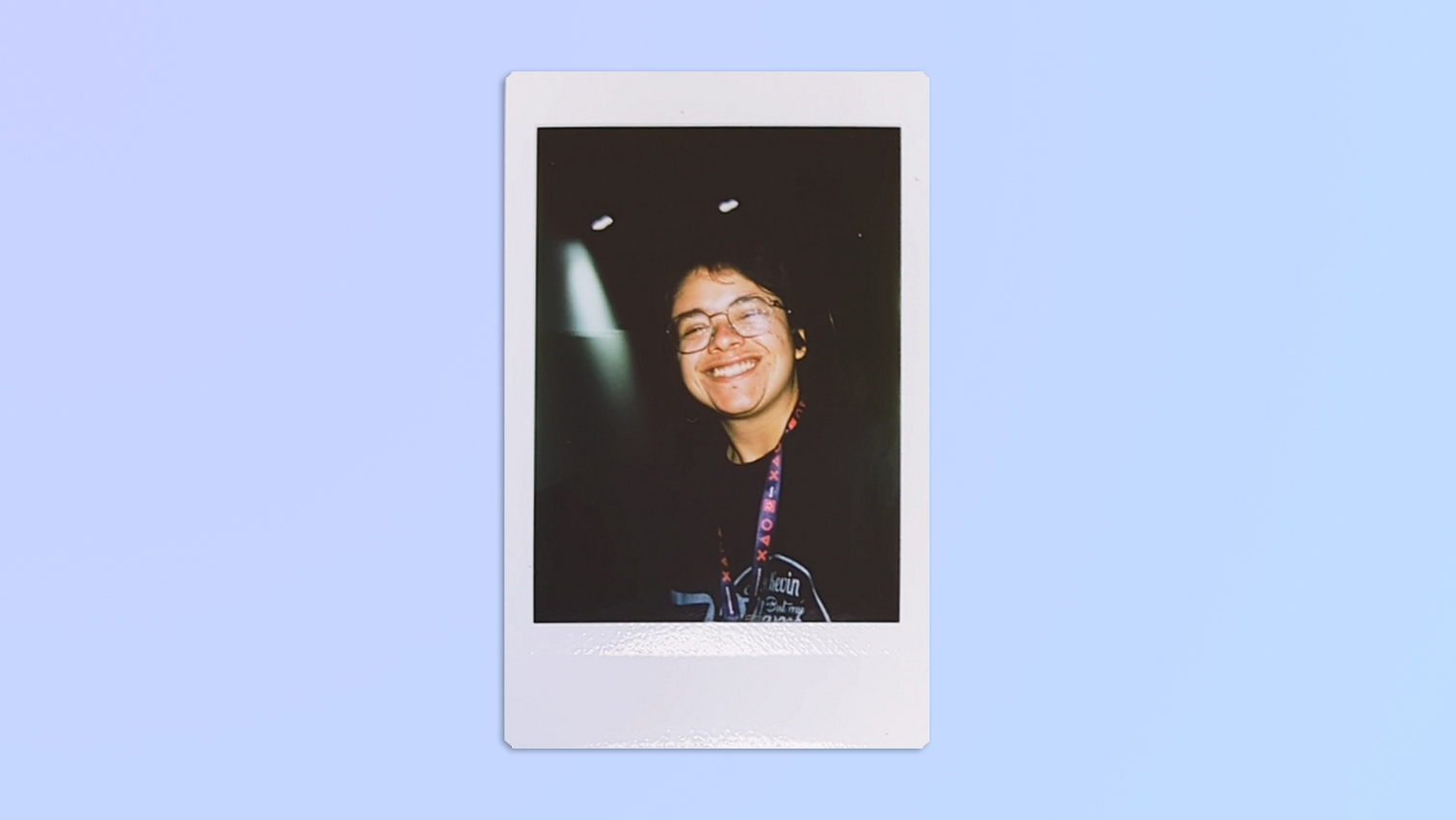
The best instant camera for weddings

Specifications
Reasons to buy
Reasons to avoid
The Fujifilm Instax mini 41 is the best instant camera for weddings. It’s like the Instax mini 12 but for grown-ups, thanks to its sleek, dark, premium body. It’s extremely easy to use with just a couple buttons on its body, so even those who aren’t familiar with the semantics of photography can take photos with it. It can be passed around your wedding to document everything without any worry at all. And for selfies with the bride and groom, there’s a selfie mirror on the front as well as a close-up mode for detailed shots.
The Instax mini 41 takes lovely photos regardless of the lighting conditions — so whether it’s an indoors or outdoors wedding, or it’s taking place at night, this camera will capture great photos. Prints are quick to develop and color reproduction is accurate. If you want to share your wedding snaps to social media, the Instax Up! app lets you quickly scan them on any smartphone.
One of the Instax mini 41’s drawbacks is that its flash is always on — which isn’t the case with the Instax mini 12. But this also means that the camera takes good photos in dimly lit environments, like wedding dance floors!
The cherry on top of an already delicious cake? Its long battery life. Utilizing two AA batteries, the Instax mini 41 can take a total of 100 shots before the batteries need replacing. No need to worry about putting the camera on charge between film pack changes.
Overall, the Instax mini 41’s premium build and design, ability to take stunning photos, long battery life and great low-light performance make it the best instant camera for weddings.
Find out more in our full Instax mini 41 review.
See sample images
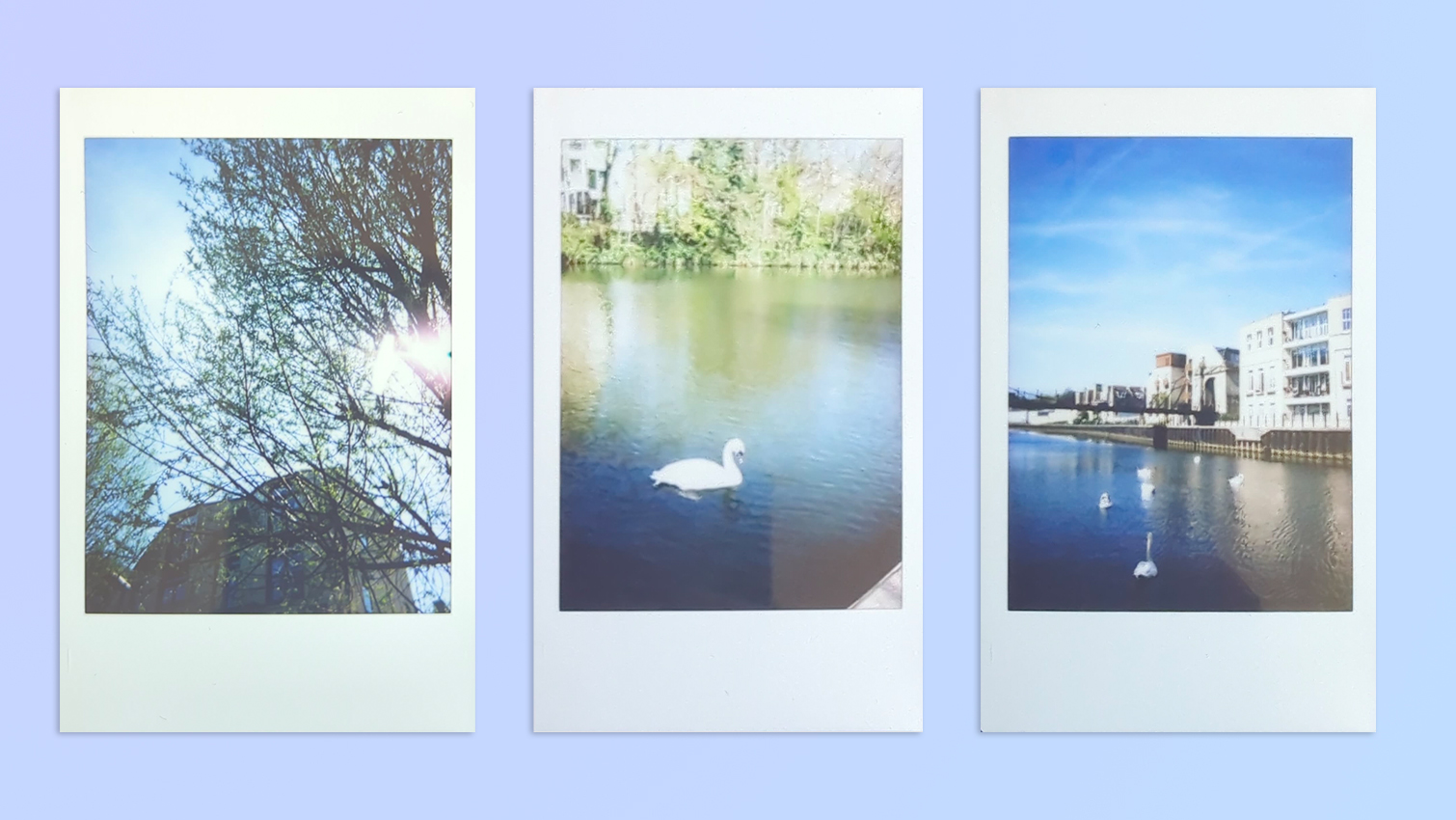


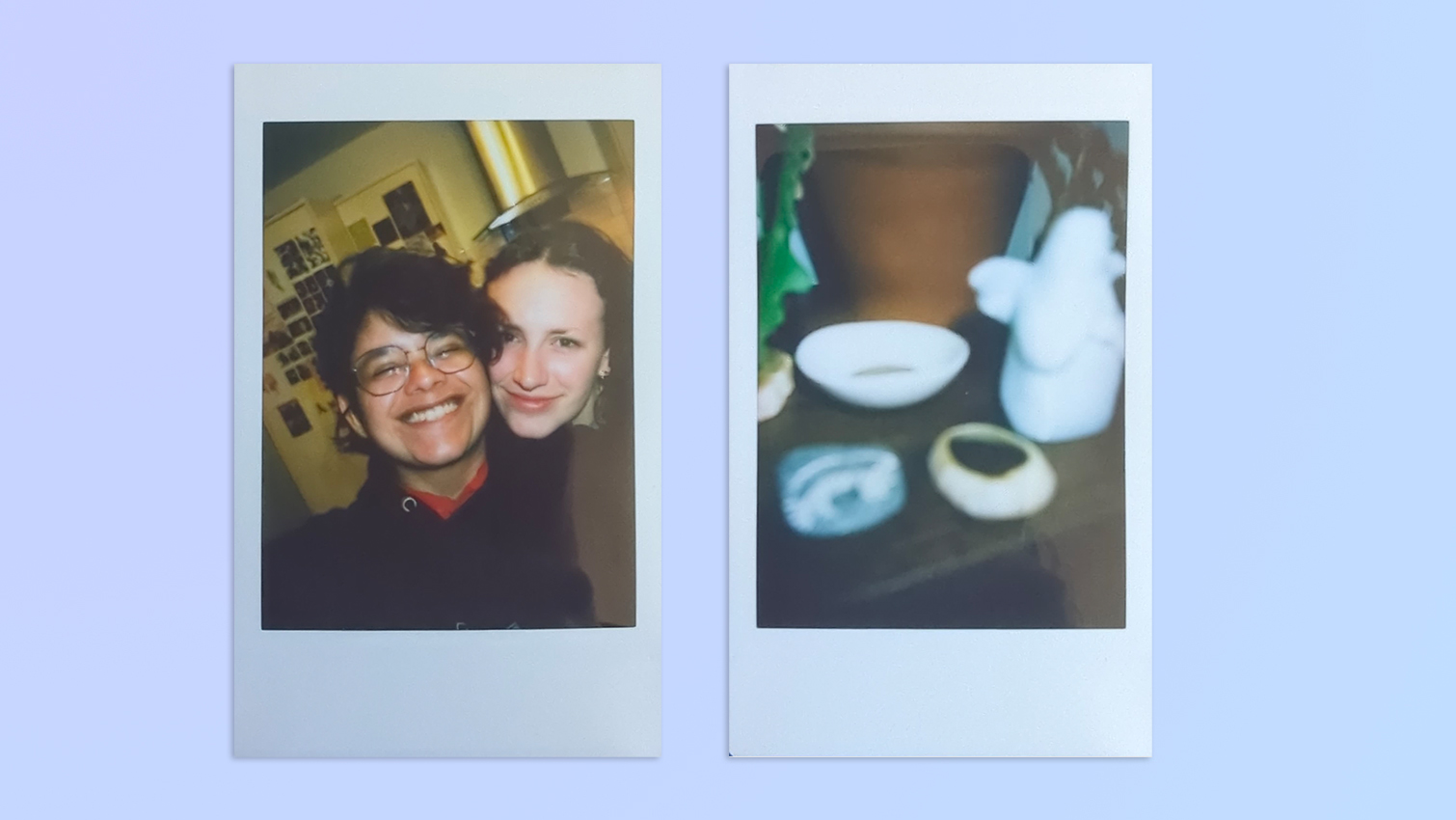

The best instant camera for travelling
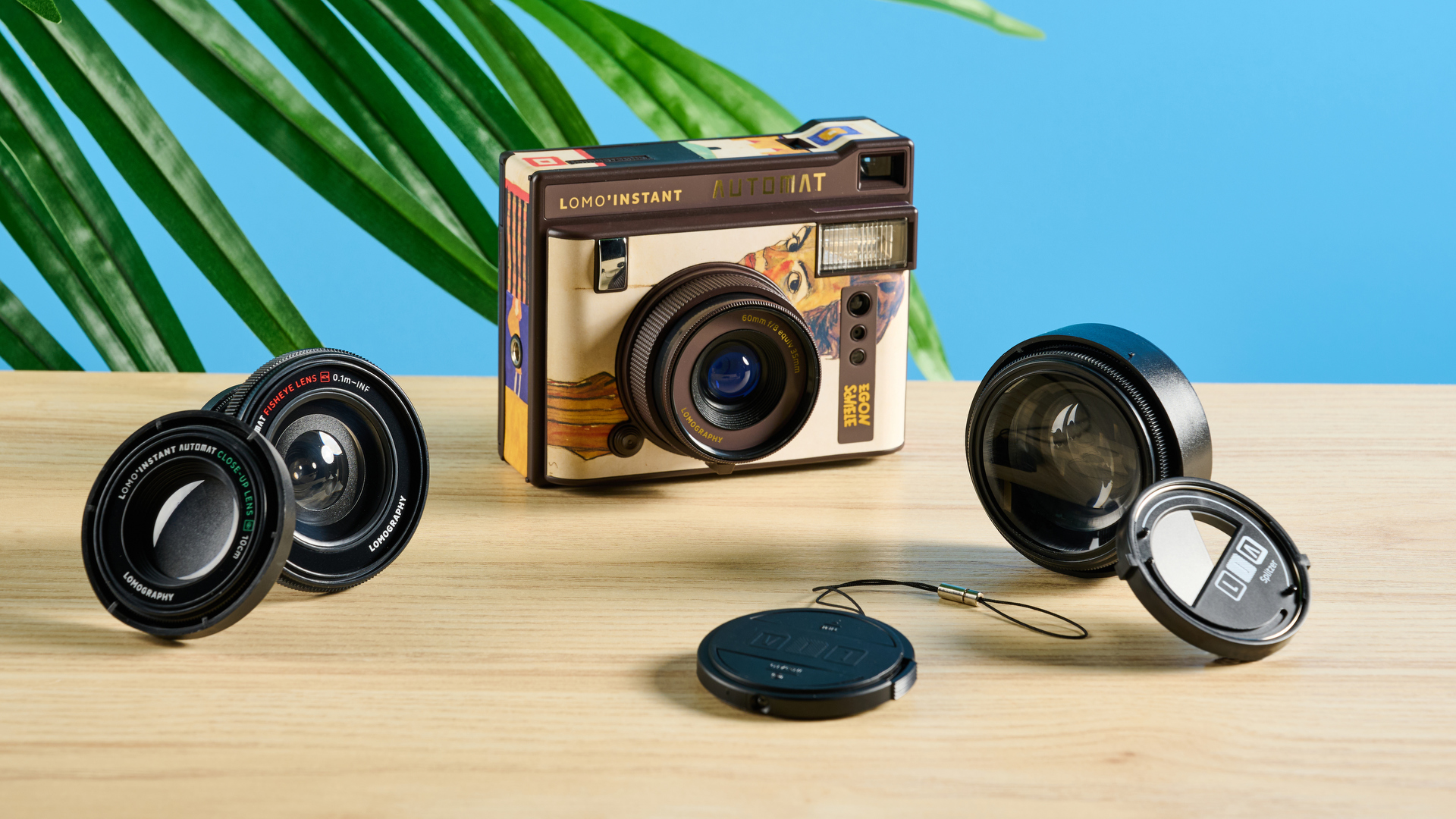
Specifications
Reasons to buy
Reasons to avoid
The Lomography Lomo’Instant Automat is our top pick for the best instant camera for travelling thanks to its diminutive size and weight, but more important its range of lens attachments that’ll suit any situation your travels throw at it.
Measuring 4.68 x 3.68 x 2.36 inches and weighing 0.78lbs, we found the Instant Automat extremely easy to carry in a coat pocket and hold with either one or both hands. One of its biggest selling points is its three lens attachments: fisheye, wide-angle and close-up. These make the camera great for vacation snaps, especially with the wide-angle lens. You’ll be able to capture landscapes more easily, and when you want to take portraits of your friends or family, you can attach the fisheye or close-up lens. It’s easy to do so, as all you need to do is twist them onto the built-in 60mm lens. The Lomo’Instant Automat also stands out because of its lovely design. It’s available in 12 colorways, all inspired by artists from around the world. We tested the Schiele edition which is decorated with Austrian artist Egon Schiele’s work.
Printing on mini format film, the Lomo’Instant Automat impressed us with its faithful color reproduction and print quality. Photos taken indoors and outdoors turned out detailed. It’s perfect for anyone seeking a compact camera for snapping vibrant prints. And thanks to a straightforward control scheme, it can be used by anyone.
However, we were disappointed by the fact that the Lomo’Instant Automat uses disposable CR2 batteries which are harder to procure than AAA ones. The viewfinder is also small, compared to other cameras like the Fujifilm Instax Wide 400 or the Fujifilm Instax mini 12. While similar in size to the Instax mini 12, the Lomo’Instant Automat is a little pricier but our testing proved that it’s well-worth the extra spend.
While there are other cheaper options available, the Lomo’Instant Automat is still the best instant camera for travelling, thanks to its stunning, ease of use, portability and versatile lens attachments.
Read our full Lomography Lomo'Instant Automat review.
See sample images


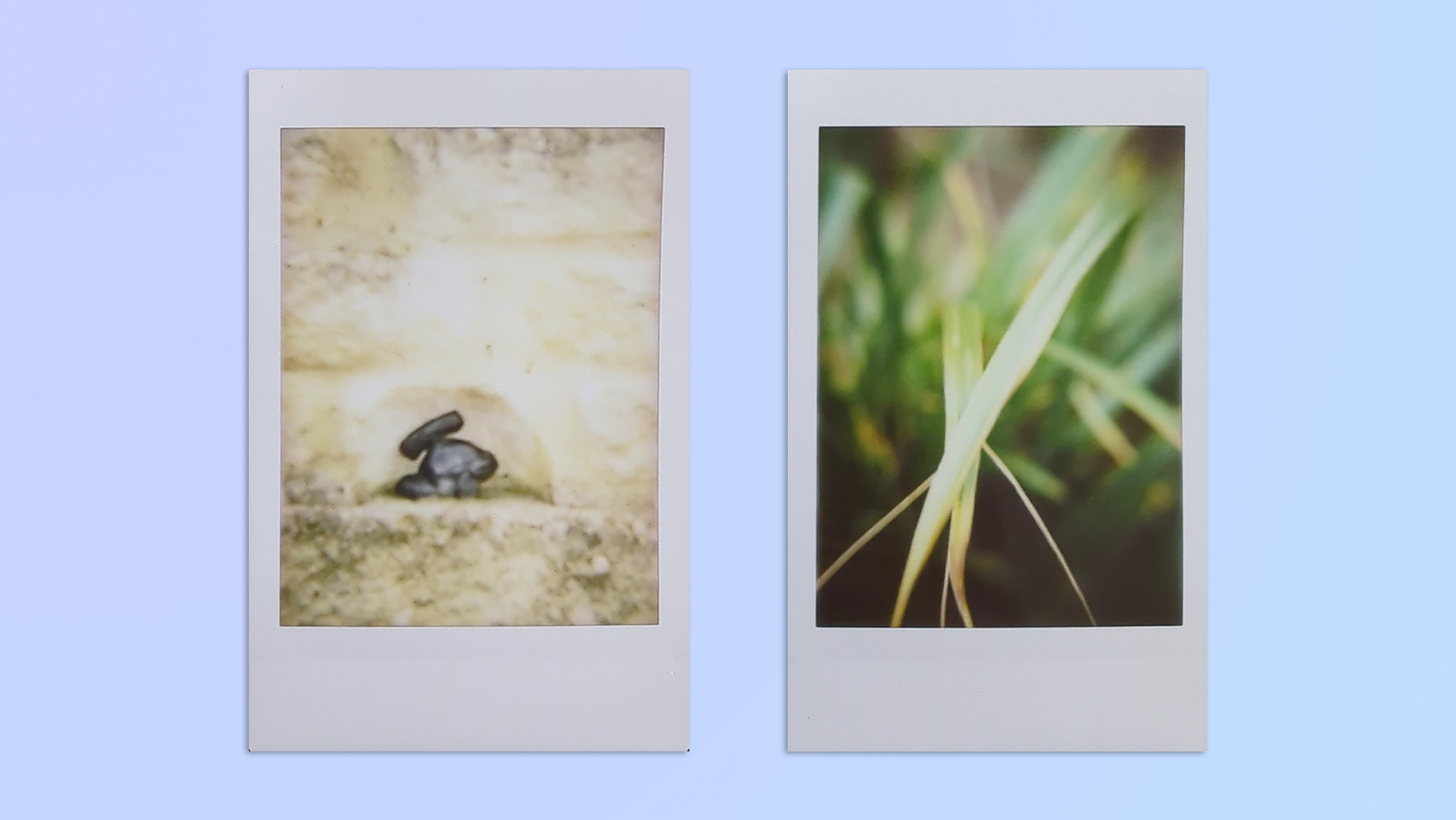
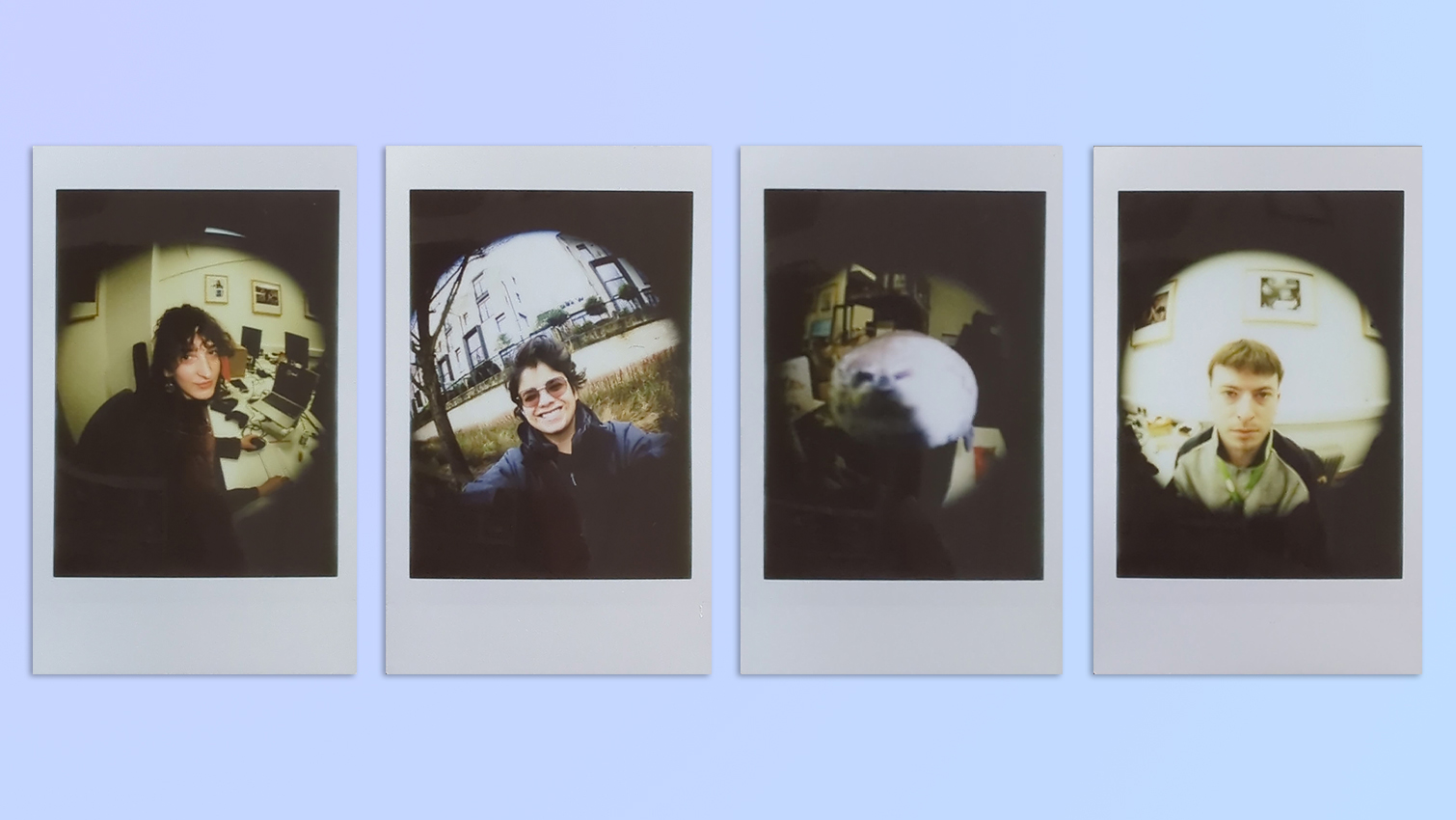
The best wide format instant camera

Fujifilm Instax Wide 400
Our expert review:
Specifications
Reasons to buy
Reasons to avoid
The Fujifilm Instax Wide 400, much like its predecessor the Instax Wide 300, is a bulky beast. With a 95mm f/14 retractable lens, it uses Instax Wide film that’s ideal for landscapes and group shots. It’s an easy-to-use camera, featuring just one button: the shutter button. It comes with an attachable macro lens that doubles as a selfie mirror. The camera doesn’t have any manual flash control, so the auto flash optimizes the lighting according to distance.
Fujifilm has improved on the predecessor’s design by giving the Instax Wide 400 a rounded body for better handling — you can even grip it with just one hand. Where the camera shines is in bright conditions. The prints are big and they come out bright and detailed. The dedicated macro lens takes a little time to get used to, but close-up shots are lovely once you get over the initial struggle. The camera falters in low-light conditions, though, and there are no creative modes, like double exposures.
Obviously, wide images come at a price — literally and figuratively. Wide paper costs just over $1.10 per shot, making it a lot more expensive to run this camera in the long term. It's also fairly pricey at $149, at least compared to budget options like the Polaroid Go Gen 2 or Kodak Mini Shot 2 Retro. That's the literal prices out of the way, now for the figurative: this is a big camera thanks to the wide film, so it isn't one that you can easily stash in a travel bag, which is a shame given how well it's suited to landscapes and group shots.
Overall, though, the Instax Wide 400 is a great instant camera, especially if you’re a fan of the retro aesthetic and want incredible wide images.
Read our full Fujifilm Instax Wide 400 review.
See sample images


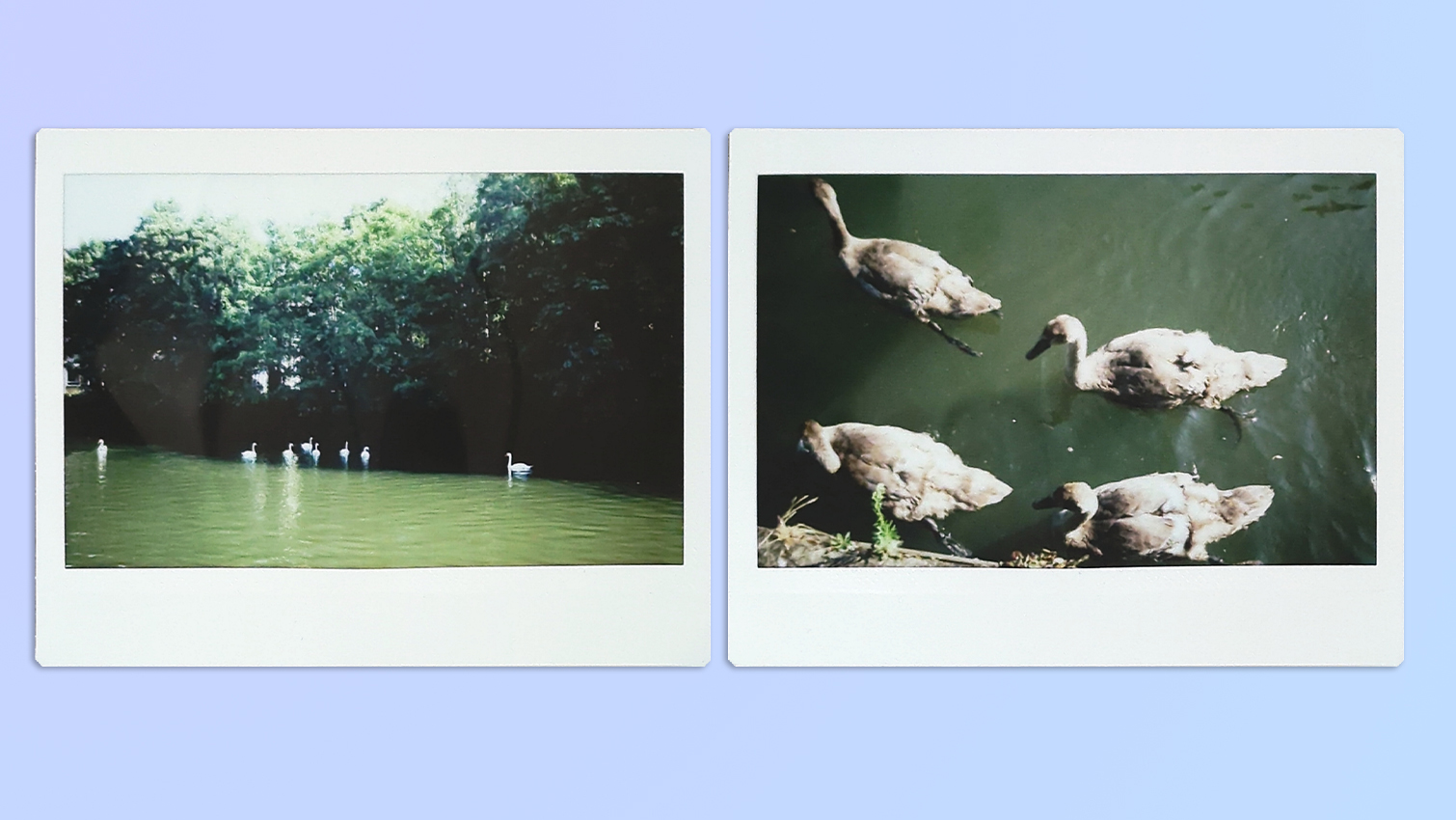
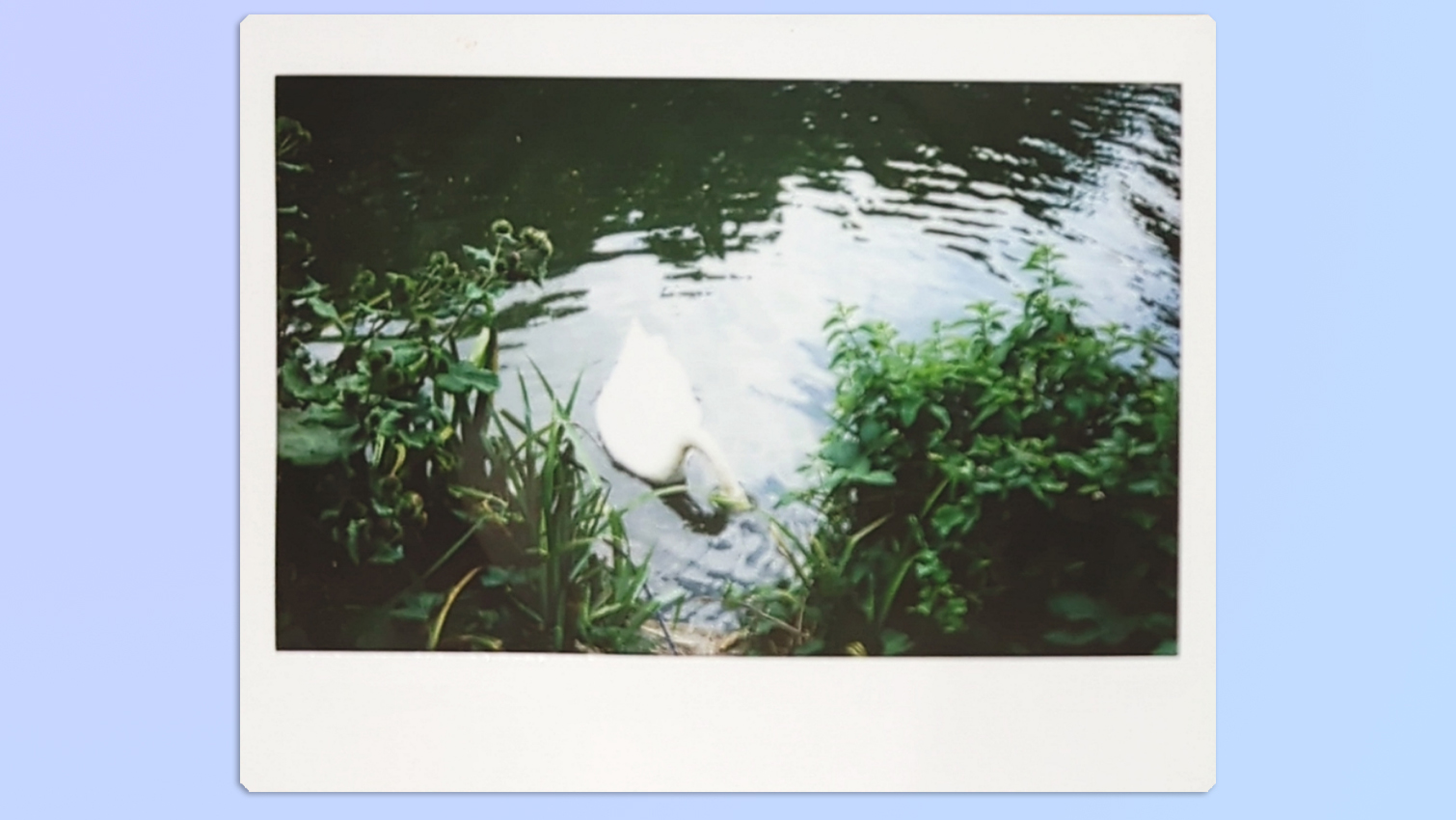
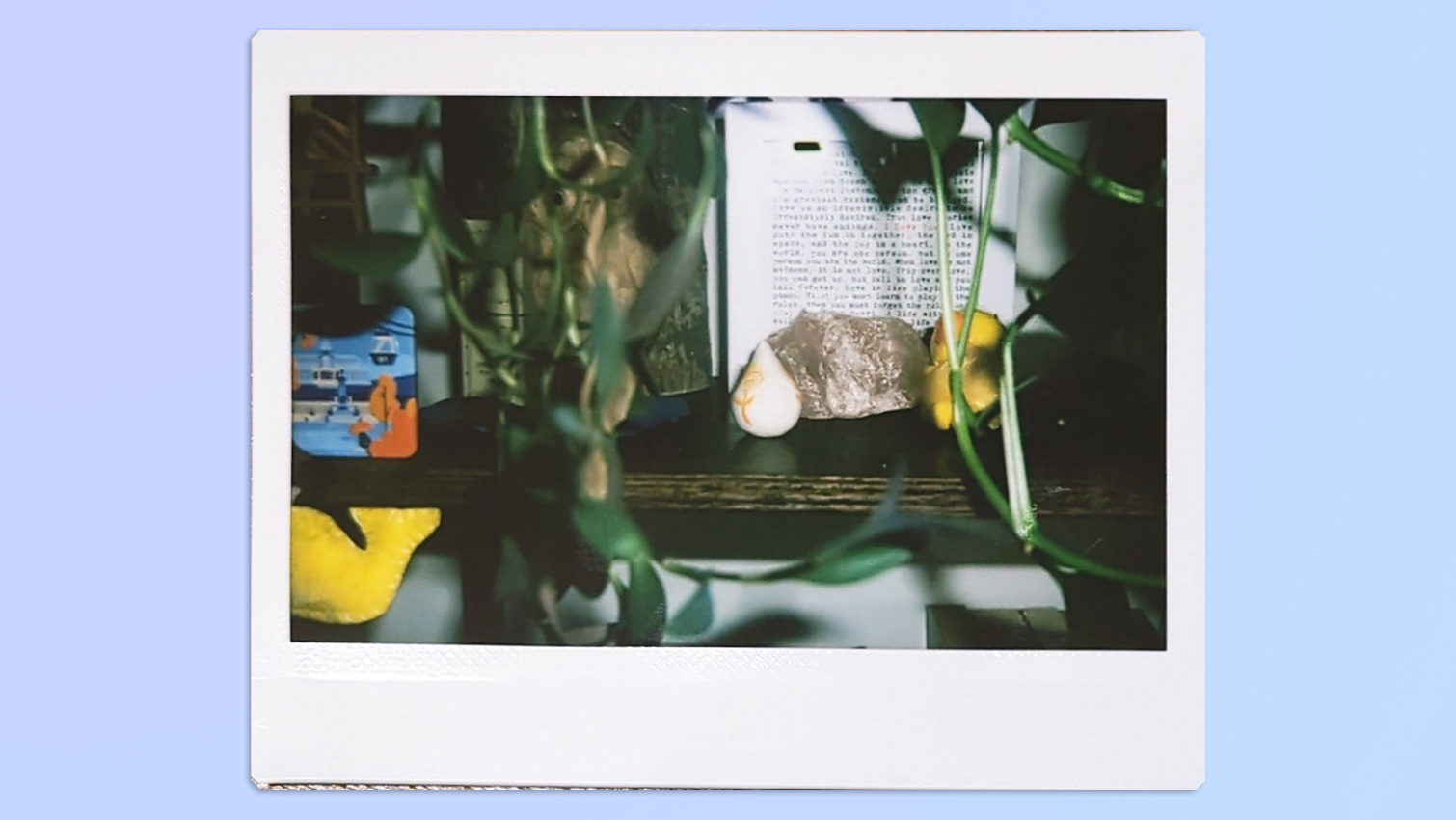
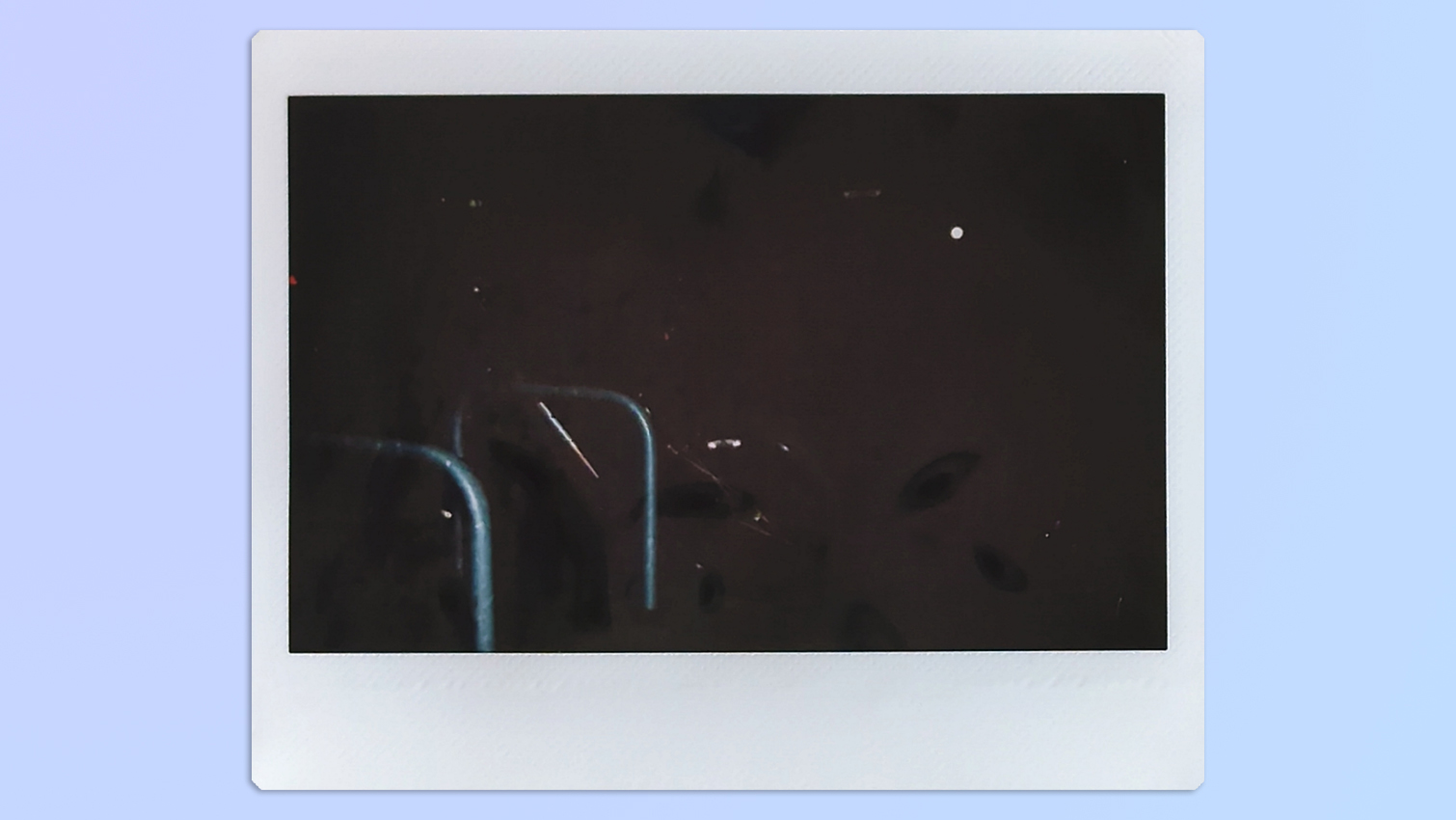
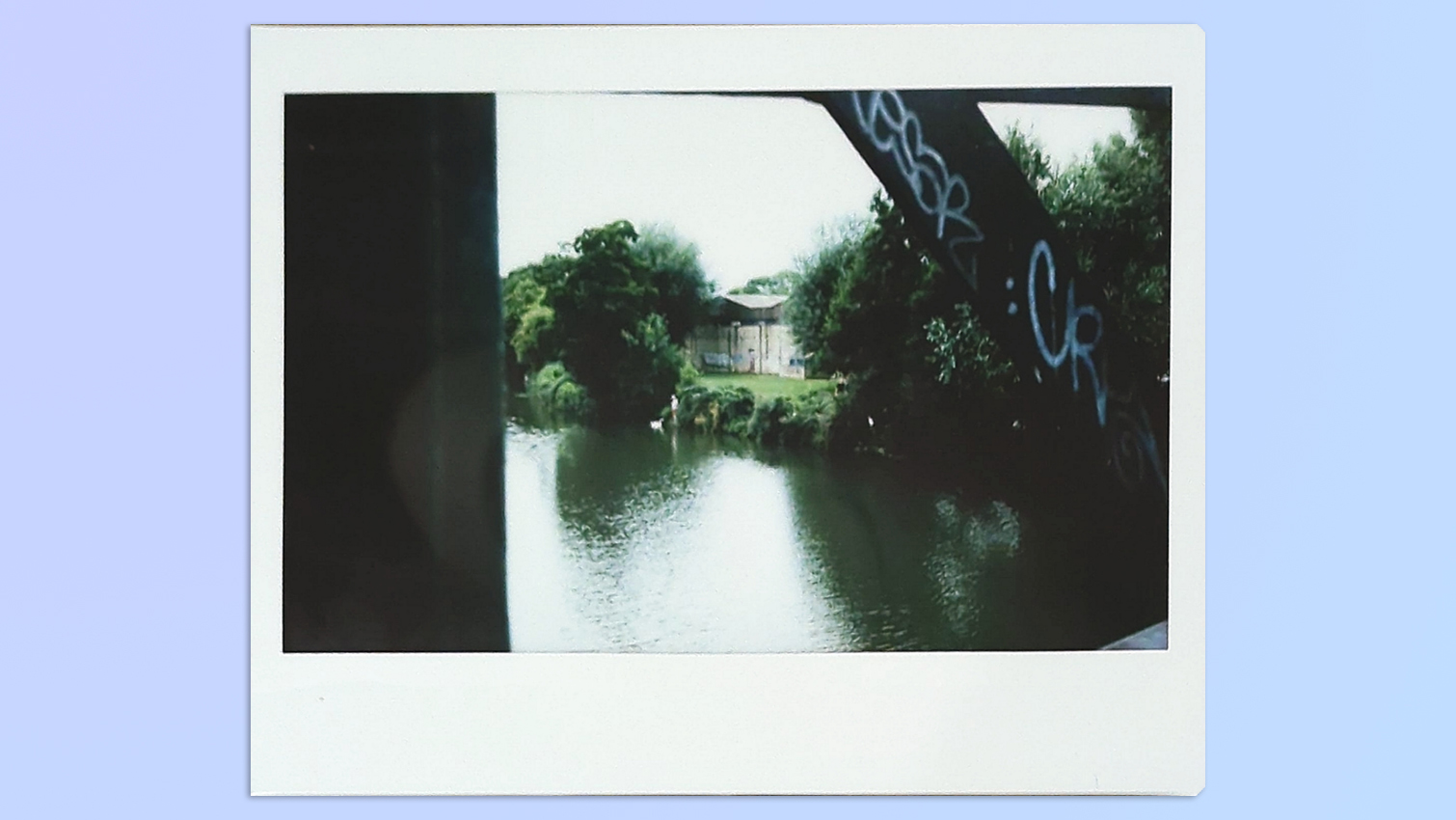

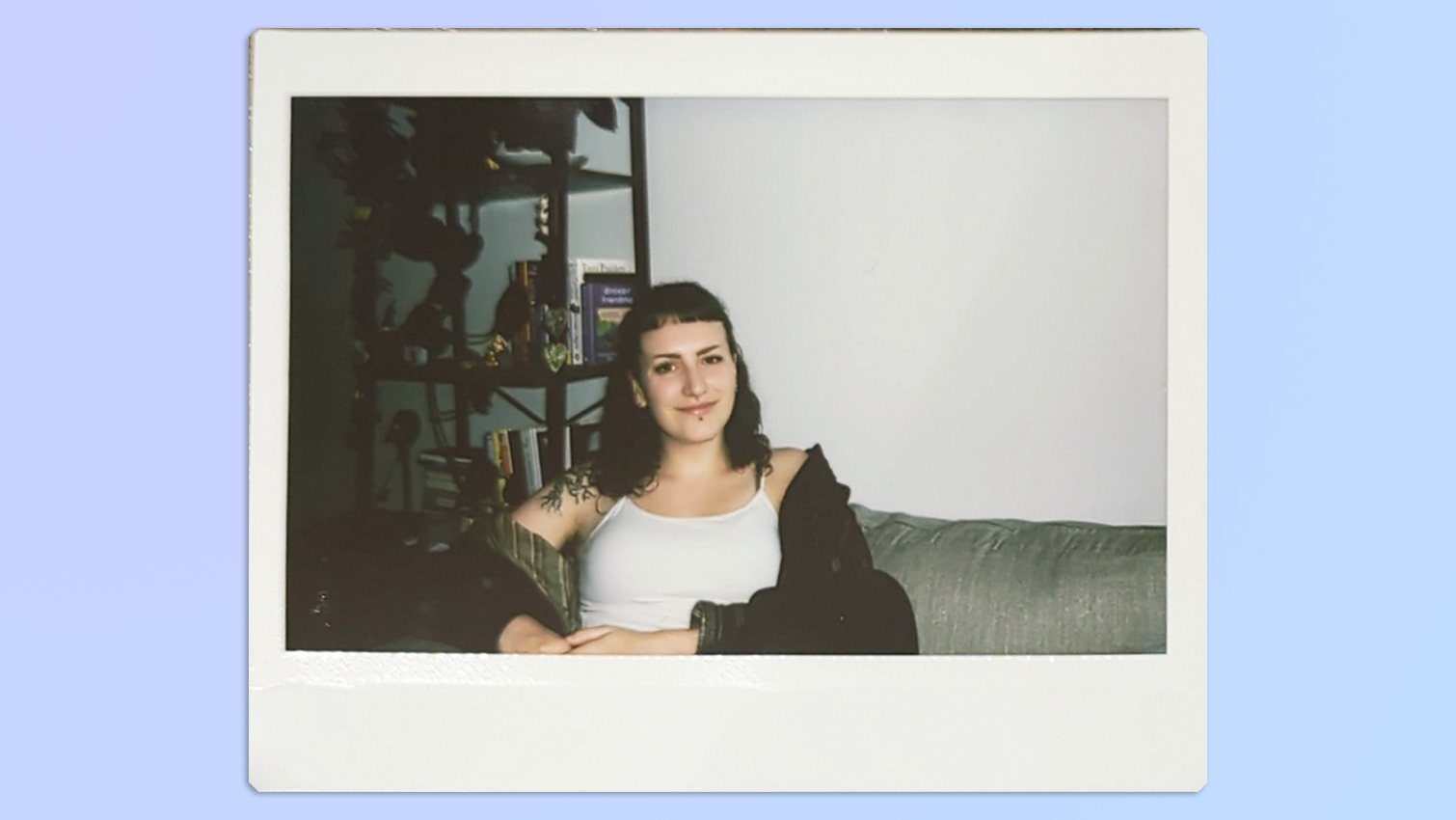

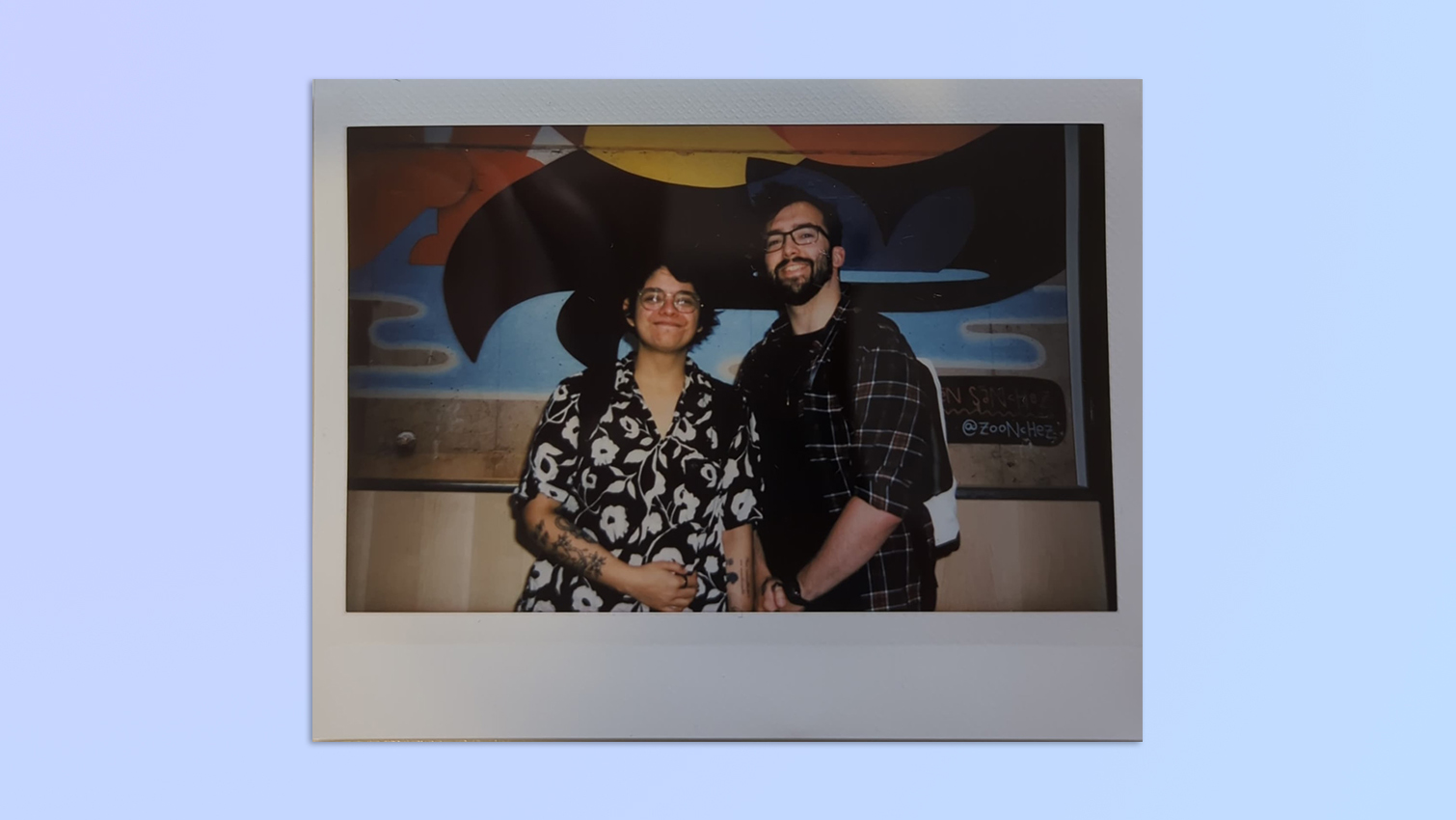
The best instant camera for casual creativity
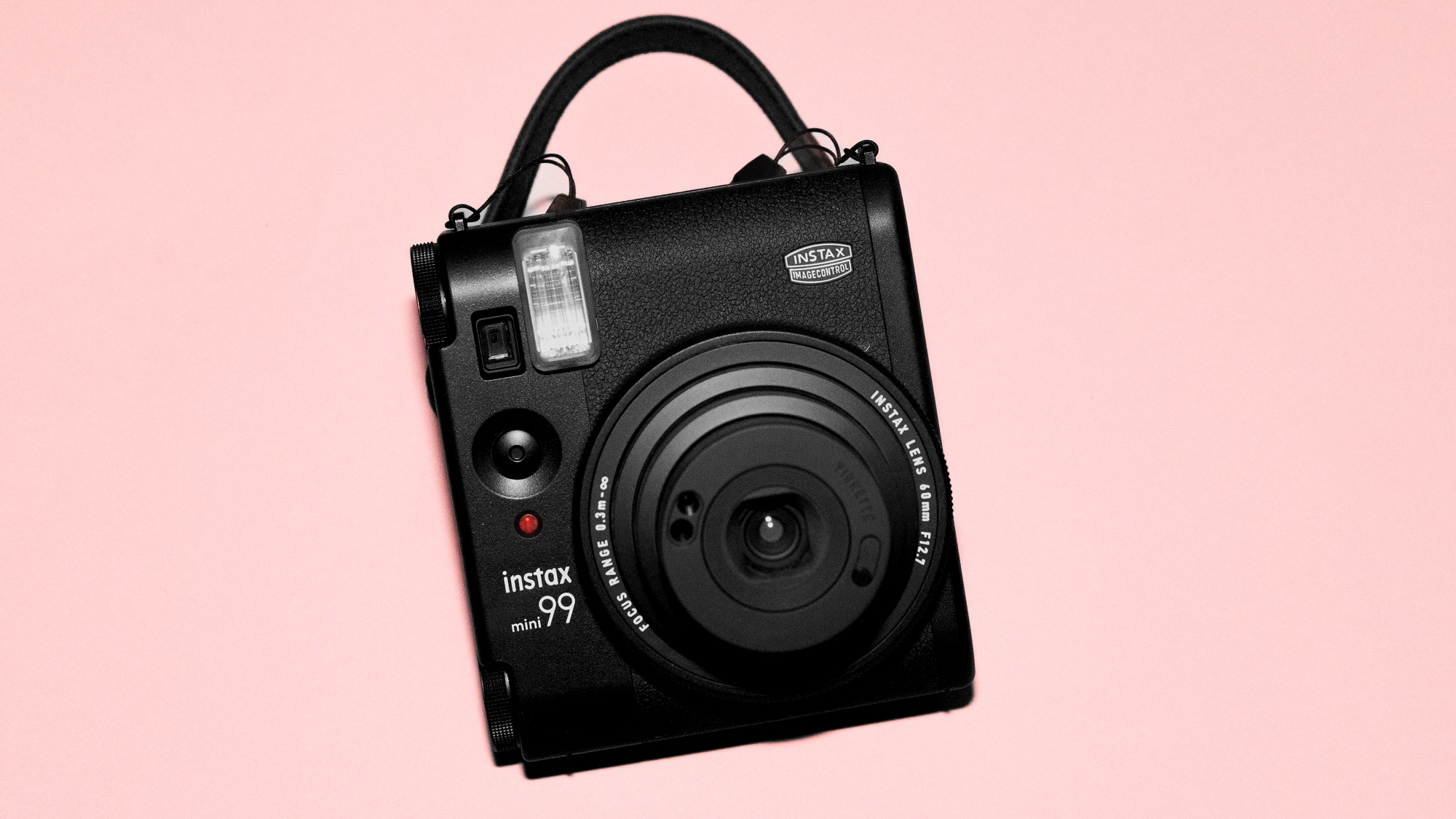
Specifications
Reasons to buy
Reasons to avoid
The Fujifilm Instax mini 99 is the best instant camera for anyone wanting high levels of creativity without the complex controls of the Instax mini Evo — that's really what the mini 99 is all about. There are loads of creative filters and modes to help you get unique shots, including: creative color profiles, a double exposure mode and a vignette mode. The camera also features exposure compensation dials allowing you to fine tune the brightness of your shots. Better yet, all of that is wrapped up in a much simpler package than the mini Evo (which offers more creativity but with advanced controls). On top of the mini 99 are two dials for your color filters and modes, so it's super easy to get creative, quickly.
There's not getting around how beautiful the Instax mini 99 looks, either. This camera features Fujifilm's trademark retro aesthetic, employed to perfection. It's also extremely well built, but remains easy to carry.
The Instax mini 99 is easy to use and has really strong battery life, although we wish it could be charged in camera. Instax film packs are also quite pricey, even though we love the look of them, and we missed the camera having a selfie mirror which plenty of rivals have.
Cost-wise, the mini 99 is quite pricey, costing as much as the advanced mini Evo and more than the Kodak Mini Shot 2 Retro. But as we so often find ourselves saying, with Instax cameras, you really get what you pay for.
Read our full Fujifilm Instax mini 99 review.
See sample images

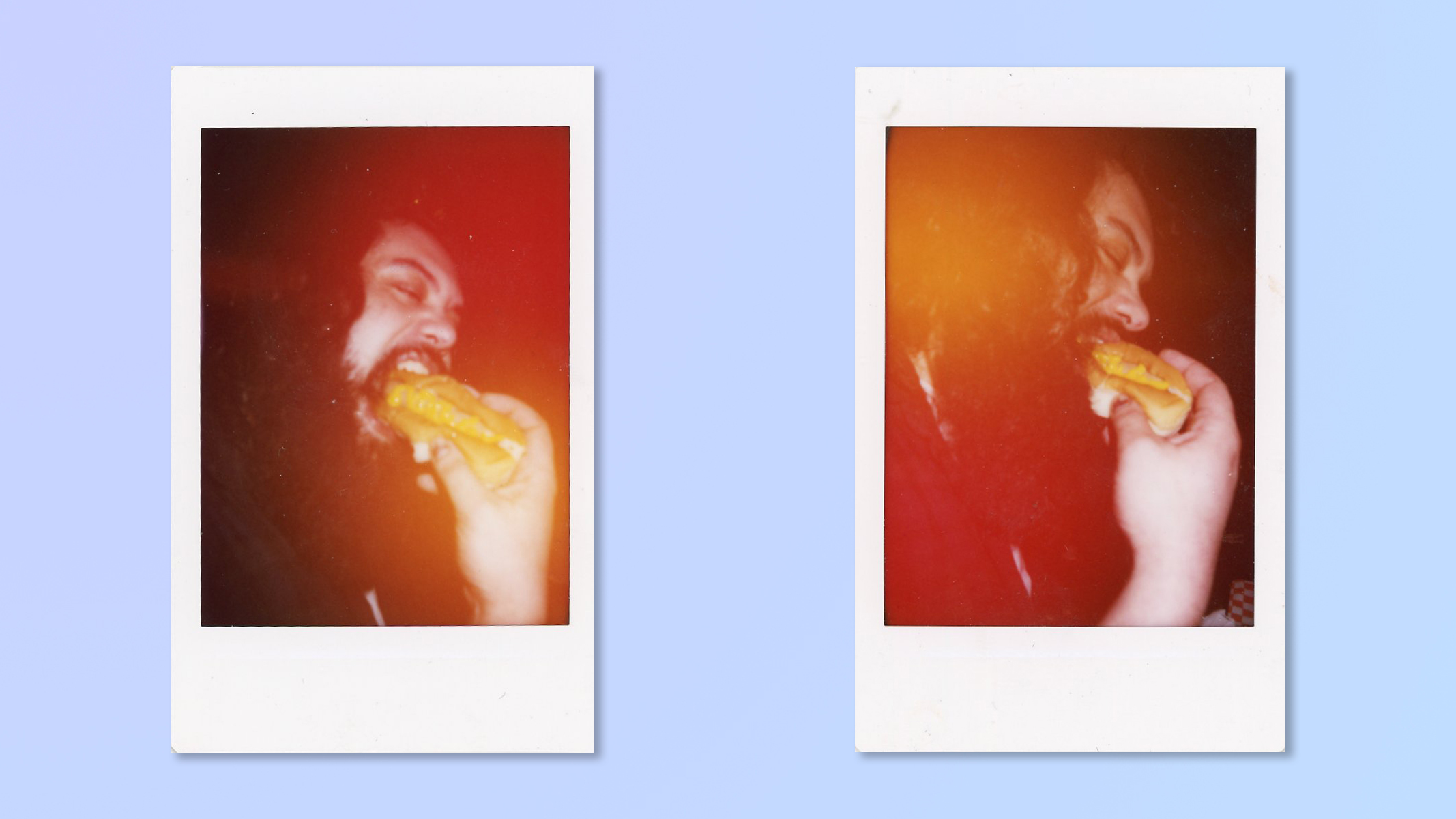
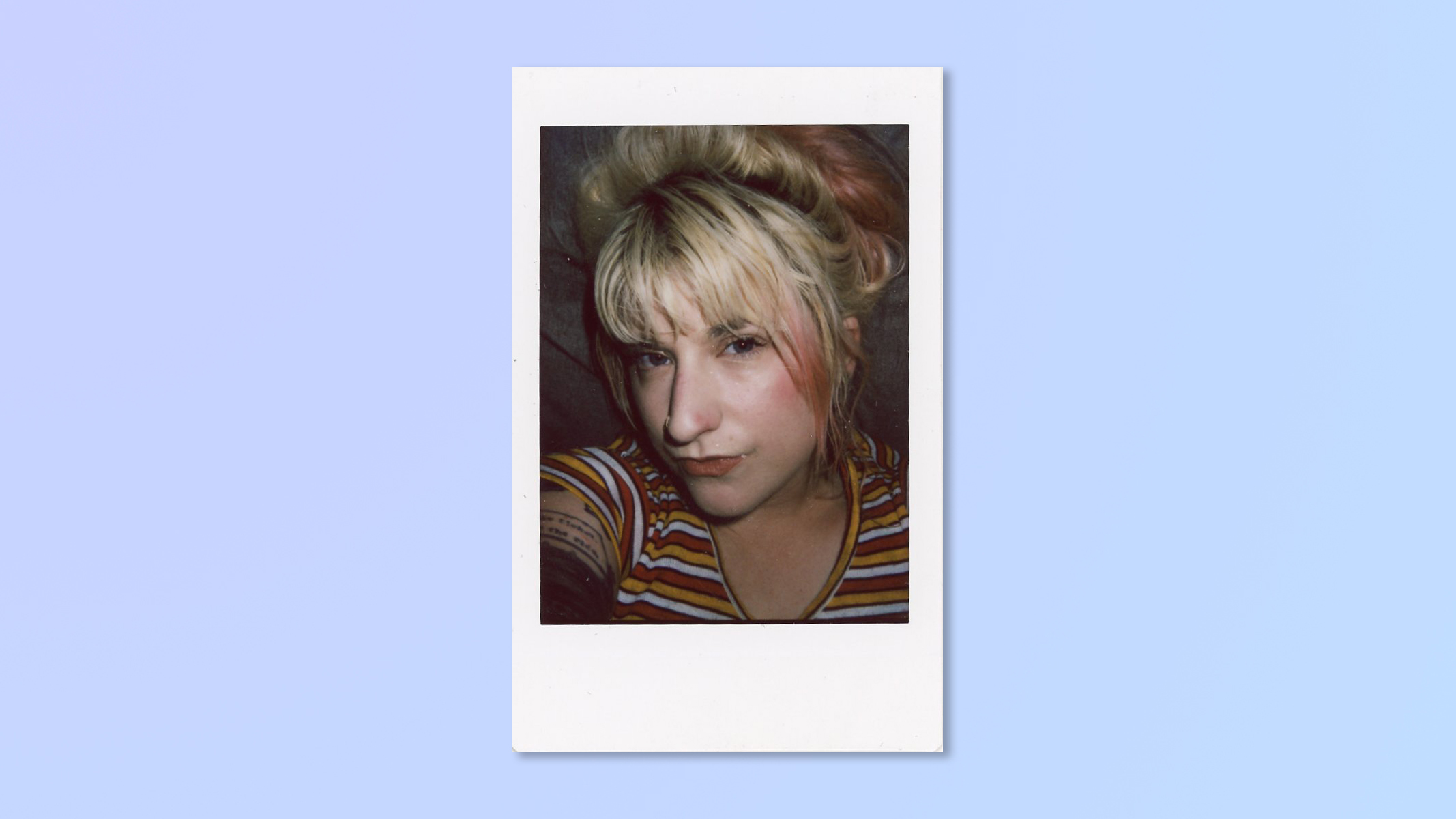


The best 2-in-1 instant camera
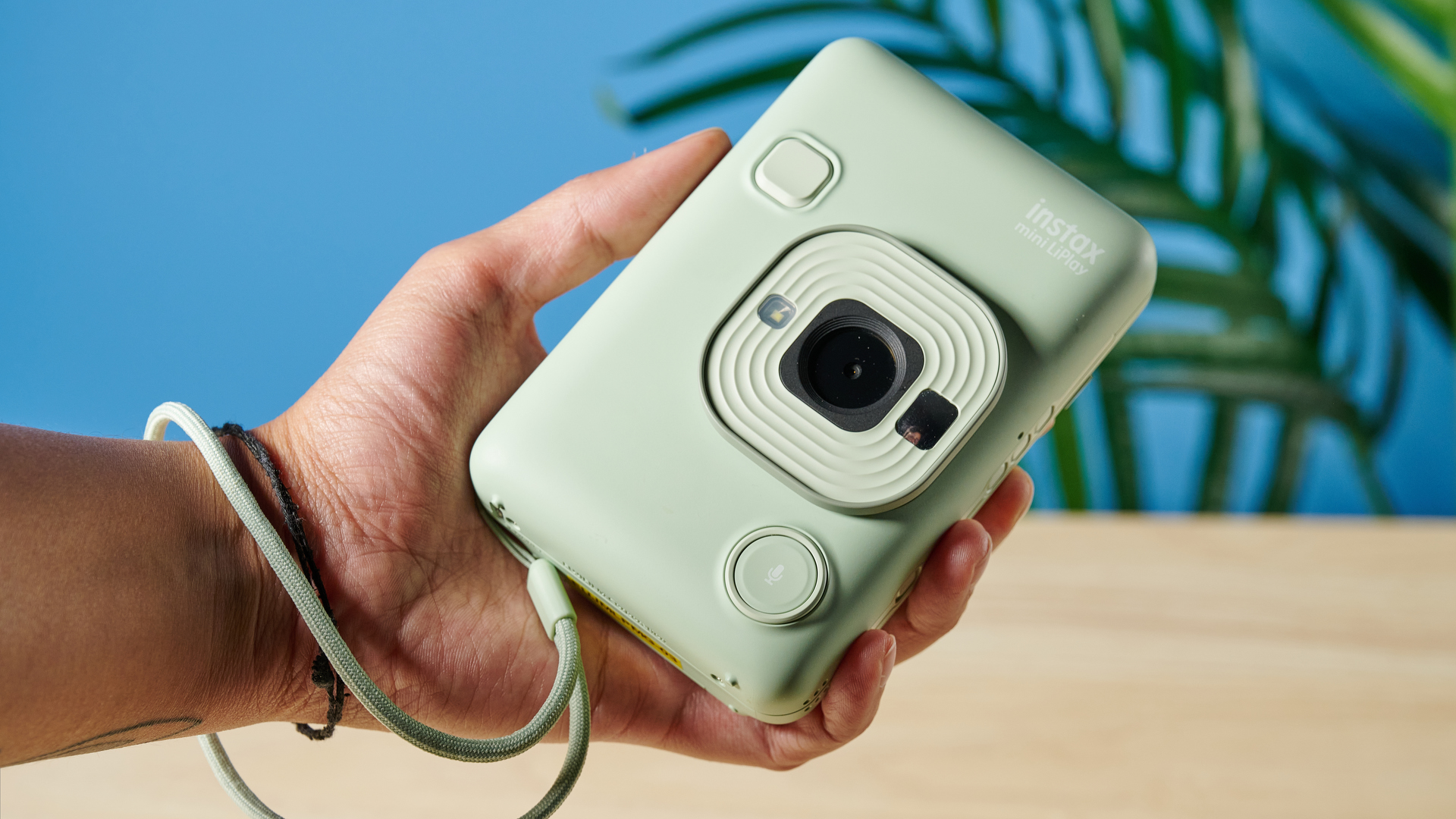
Specifications
Reasons to buy
Reasons to avoid
The best 2-in-1 camera and smartphone printer is the best because it's actually a 3-in-1. The Fujifilm Instax Mini LiPlay also features an audio recorder, giving you the ability to print photos with soundbites as the Instax mini LiPlay allows you to record up to 10 seconds of audio which can then be added as a QR code to prints. While cumbersome, it’s an attractive feature and can be used to flex creativity. Speaking of creativity, you can also add frames and choose from an array of filters.
This is Fujifilm’s smallest instant camera and the antithesis of the Instax Wide 400. The Instax mini LiPlay received an update in summer of 2024 which saw the introduction of three new colorways, a USB-C charging port, and the ability to update firmware from your smartphone. It’s a hybrid camera and printer that produces lovely prints with ample of detail, and enables you to quickly print photos from your smartphone.
Though it falters in low-light conditions, the Instax mini LiPlay is a solid choice for those who want to shoot in bright conditions and get detailed prints. Its small size and low weight make it a viable travel companion, although we prefer the Kodak Mini Shot 2 Retro for that, as it's a similar size but performs much better in low light.
Read our full Fujifilm Instax mini LiPlay review.
See sample images





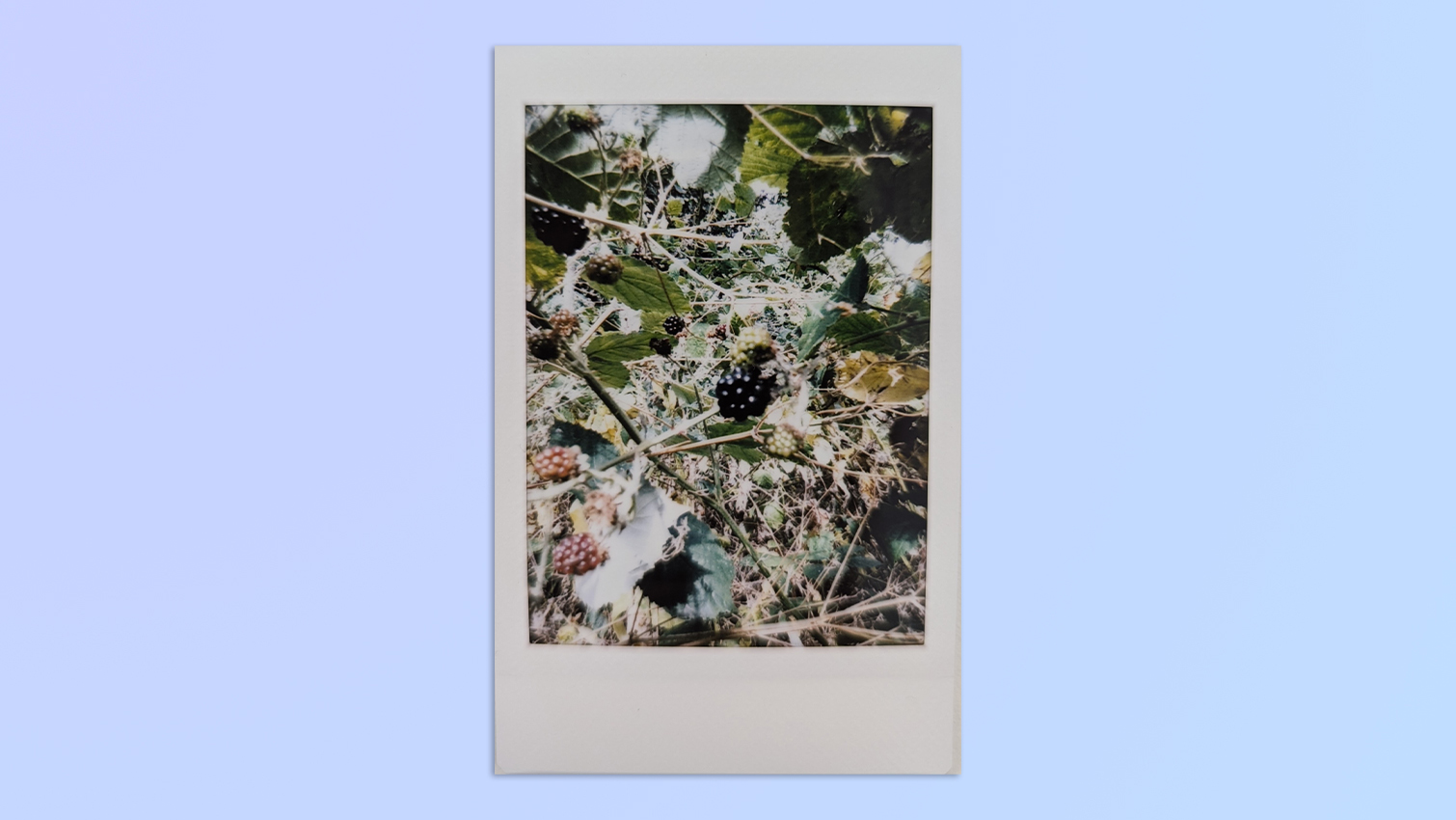
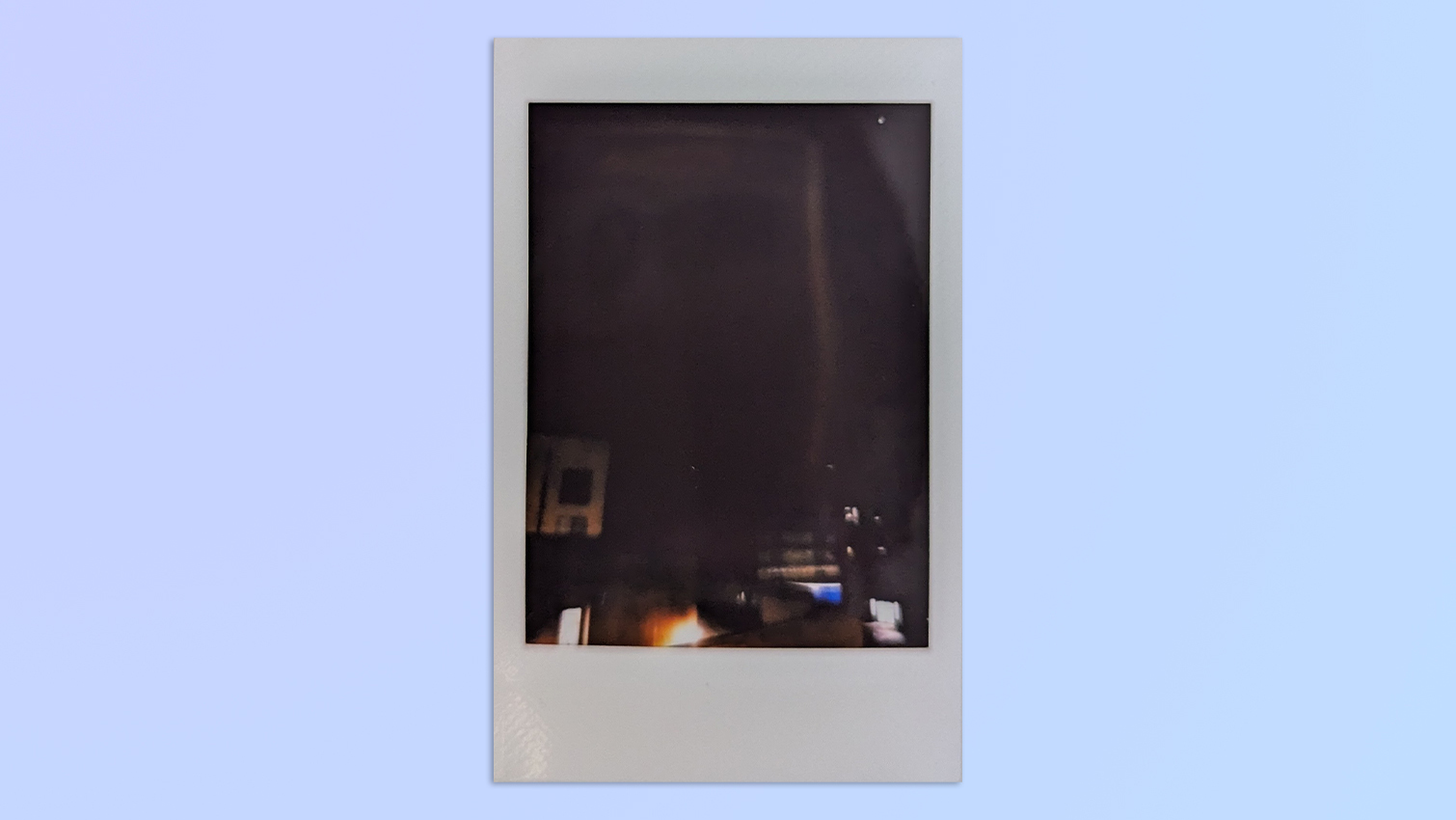

Also tested

Fujifilm Instax Mini 40
Our expert review:
Specifications
Reasons to buy
Reasons to avoid
One of several Fujifilm Instax Mini models in this list of the best instant cameras, the Mini 40 shares many of its specs with the Instax Mini line, but wraps them in a cool retro body.
It lacks the bells and whistles of some of the other entries here — particularly the entries sitting above it — but what it loses in features it makes up for in ease of shooting; this is a really simple instant camera to get the best from.
Not that it's without any features at all: a selfie mode is a nice extra and there's a constantly firing flash that gives it better skills in low-light conditions than you might expect.
Most importantly, it takes lovely photos, with vibrant color and generally good exposures. Other instant cameras may do more, but the Instax Mini 40 does its thing with a minimum of fuss and a maximum of style — and all for a great price of less than $100.
Read our full Fujifilm Instax Mini 40 review.
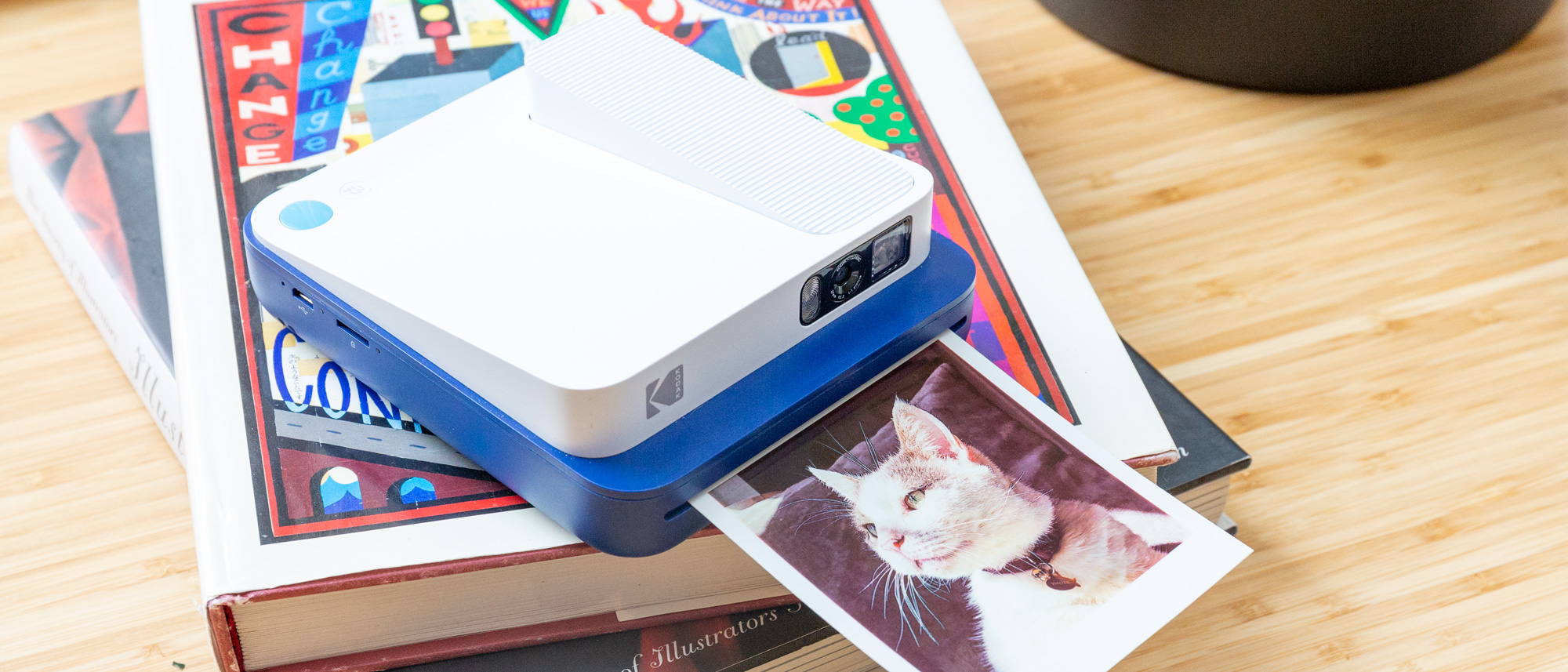
Kodak Smile Classic
Our expert review:
Specifications
Reasons to buy
Reasons to avoid
The Kodak Smile Classic's design riffs on the iconic Polaroid instant camera, but in a slightly more compact design. The thing we liked the most about the Smile Classic is its massive prints, which measure 4.25 x 3.5 inches—very satisfying. While the camera prints out every photo you take with it, you can also use it to print photos from your smartphone, and add filters and stickers in the process. Of course, with larger prints comes more expensive paper, but it's a good tradeoff.
The Kodak Smile Classic is priced much cheaper than the Instax Wide 400, however, we think the handling benefits of the Wide 400, as well as the lovely image quality from the Instax paper make that a better choice.
Read our full Kodak Smile Classic camera review.

Specifications
Reasons to buy
Reasons to avoid
The Kodak Mini Shot 4 Era isn't without its virtues. In testing, we loved the super cheap film and the retro images the camera produces, plus the quick and easy borderless printing via Kodak's companion app. It's a super easy camera to use with a straightforward interface that anyone can pick up and get to grips with. What's more, this camera comes with autofocus and face detection like one of the best mirrorless cameras.
However, we haven't awarded it a place in our top picks (hence why it's in the also tested section). The reasons above are great and all, but this cameras costs nearly $240 when bundled with 10 film cartridges. That's a huge chunk more than its wide rival, the Instax Wide 400. For that money, you'd expect performance on a par with the Instax Wide, right? Well, think again. Unfortunately, print quality isn't great, and versus the Instax Wide 400, the Kodak feels cheap, plasticky and uncomfortable to hold.
Find out more in our full Kodak Mini Shot 4 Era review.
What to look for when buying an instant camera
Instant cameras are not exactly instant. You have to wait at least 90 seconds for the picture to "fill in" to view the finished result, but we often found it took several minutes for the completed image to fully bake, revealing richer color and sharper focus.
Zink vs. Fujifilm Instax
Some instant cameras use the Fujifilm Instax film cartridges, which come in several sizes and varieties. This is the photo paper that Polaroid cameras have traditionally used: the paper is exposed to light, and the chemicals react to produce an image.
Other instant cameras use Zink paper, which uses heat to activate colors in the paper. The advantage to Zink is that you don’t have to worry about accidentally exposing the paper to light, as you do with Instax film. However, we’ve found that Zink prints tended to be less vibrant overall.
Does it print everything you shoot?
With traditional instant cameras, every photo you took was printed out. That's still the case for a good number of modern instant cameras, but given the cost of film, that approach can be very pricey — 50 cents and higher per shot, in some cases. However, some instant cameras now let you preview each shot so you can decide if you want to print it out or not. It could save you money in the long run.
Digital storage
While not universal, some of the new instant cameras have a microSD card slot, and save a digital copy of every photo you take. Not only does this make it easier to make a second print, but you can also share that photo on social media a lot more easily.
Smartphone app
Still other instant cameras can connect via Bluetooth to a smartphone app. This opens up a few more features, such as the ability to use the camera to print photos taken with your smartphone, add filters, stickers, and more.
FAQs
Here are the answers to some of the frequently asked questions about instant cameras.
What's better, an instant camera or digital camera?
That really depends on use case. If you're after the sharpest, professional-looking photos and the flexibility to do serious photo editing, then one of the best mirrorless cameras is what you need. However, if you want something casual, fun and easy to use, that produces instant stylized prints, there's nothing better than an instant camera. If you're primarily taking photos of friends at social events, and/or you want to share prints, an instant cameras are the best (and most affordable) choice.
Which is better, Instax Wide, Square or mini?
None are necessarily better. However, you should consider which you want before you buy your Instax instant camera, as each camera can only use a set film. Instax mini is better for quicker prints, sharing and scrapbooking, as it's smaller. Instax Wide is better for things like travel and documentary photography, wider scenes with friends and landscapes, thanks to its sweeping field of view. Instax Square is the middle ground, so is a versatile all rounder. Price also scales upwards from mini to Wide, so make sure to factor that into your choice.
Is Instax owned by Polaroid?
No. Instax is owned by Fujifilm, while Polaroid is a separate company. Many people use the word "Polaroid" as a synonym for instant camera, which is a misnomer.
Each brand creates its own film and camera. Polaroid film has that classic retro instant camera styling, although Fujifilm is legendary for its film and color science, so also produces very retro-styled film.
Other instant camera manufacturers include Kodak and Lomography.
How we test instant cameras
We test instant cameras in the same way we test full mirrorless cameras: that is to say, we put them through their paces. Obviously, we look at how much the camera costs, but we also consider how much money you're going to spend in the long term, too, with things like film cost, ink cartridge prices and battery expenditure.
Then we test the cameras in a range of scenarios to give a complete evaluation of their pros and cons. We'll always test out our instant cameras shooting in the types of places and scenarios you would: indoor selfies with friends, group shots, outdoors in the street and, of course, with any cute pets we come across along the way!
We always make sure to shoot with the cameras in daylight as well as low light to work out how well the cameras perform in challenging conditions. We test out all of their features and components, to see how much control they will give you over exposure and how much creativity they'll offer with things like filters. This naturally allows us to test out the camera's focusing and any other neat features, like screens, audio recording or digital storage. After all this, we'll have a great feel (literally) of what the camera feels like in use, how comfortable it is to hold, and how well its built.
If there's an app, we'll use it to edit our photos, as well as printing smartphone images if we can. Of course, we print out all our instant photos and evaluate the quality of the prints, the aesthetic of the camera filters and film, plus the colors, sharpness and definition. While doing this, we also get a good idea of how long the camera spends printing.
What does all this mean? That you can rest assured we've put the instant cameras in this list through rigorous testing, and the best picks come highly recommended.
Be sure to check out all of our camera picks:
Best cameras | Best DSLR cameras | Best action cameras | Best waterproof cameras | Best point-and-shoot cameras | Best mirrorless cameras | Best cheap cameras | Best GoPro camera | Best GoPro accessories | Best drones | Best 360 cameras | Best iPhone lenses | Best iPhone tripods |DSLR vs. mirrorless | Best Nikon accessories | Best Sony a6000 accessories
The best apps and software for editing, managing, and sharing your photos:
Best photo organizer apps | Best photo storage sites | Best photo editing software | Best photo editing apps | Best photo collage apps
Get instant access to breaking news, the hottest reviews, great deals and helpful tips.

Peter is a Senior Editor at Tom's Guide, heading up the site's Reviews team and Cameras section. As a writer, he covers topics including tech, photography, gaming, hardware, motoring and food & drink. Outside of work, he's an avid photographer, specialising in architectural and portrait photography. When he's not snapping away on his beloved Fujifilm camera, he can usually be found telling everyone about his greyhounds, riding his motorcycle, squeezing as many FPS as possible out of PC games, and perfecting his espresso shots.
- Sean Captain
- Jackie Dove
- Nikita AchantaSenior Writer, Reviews
